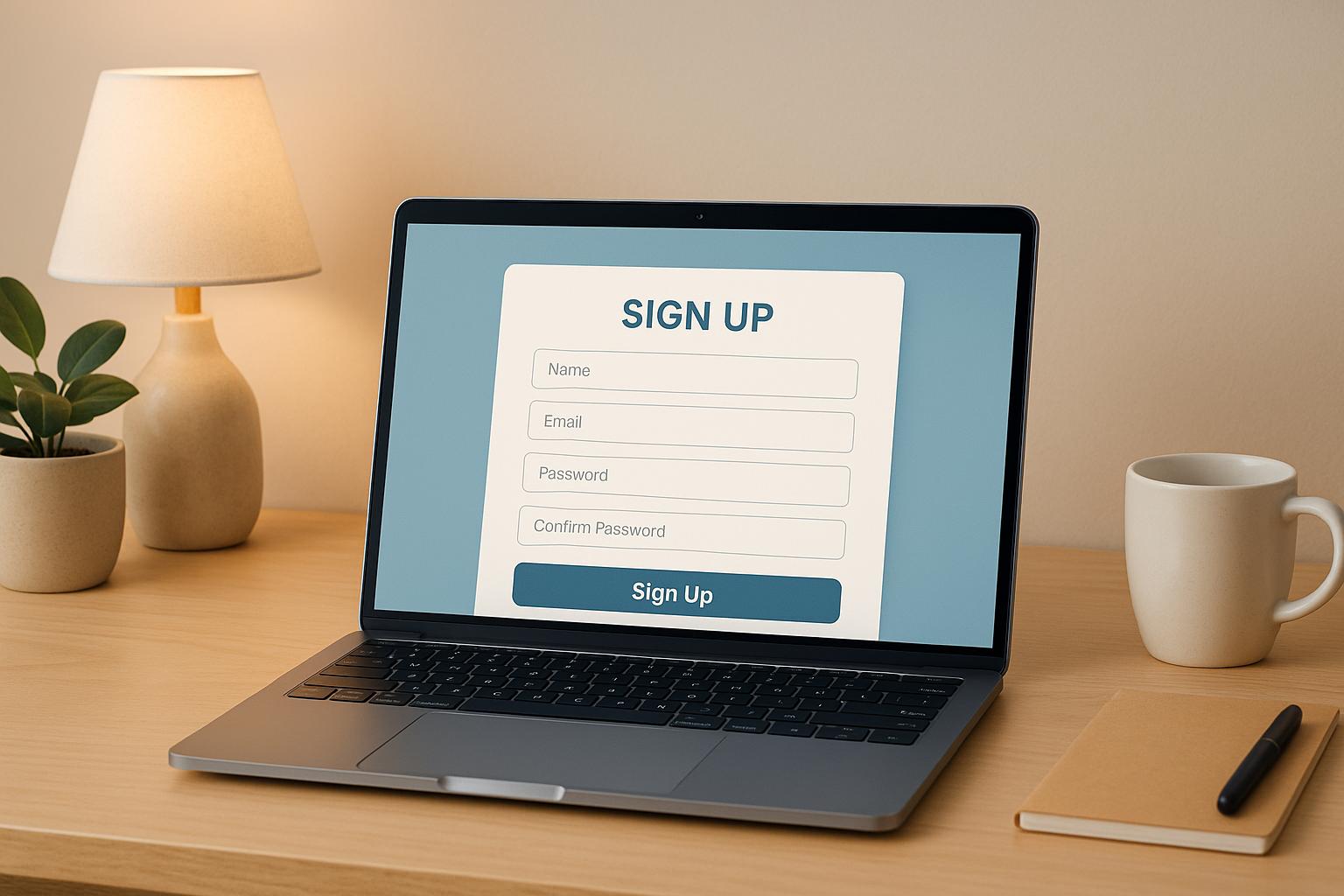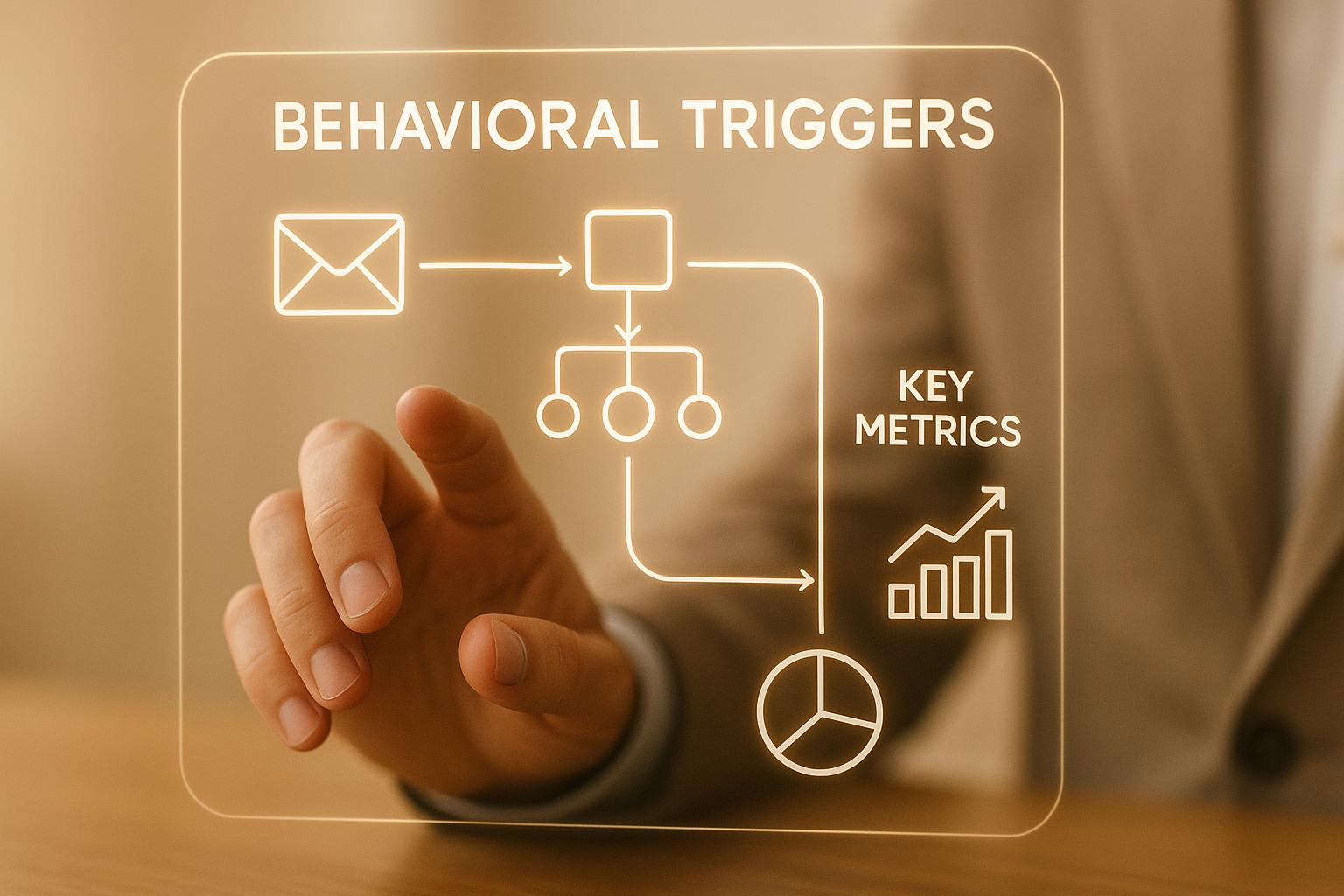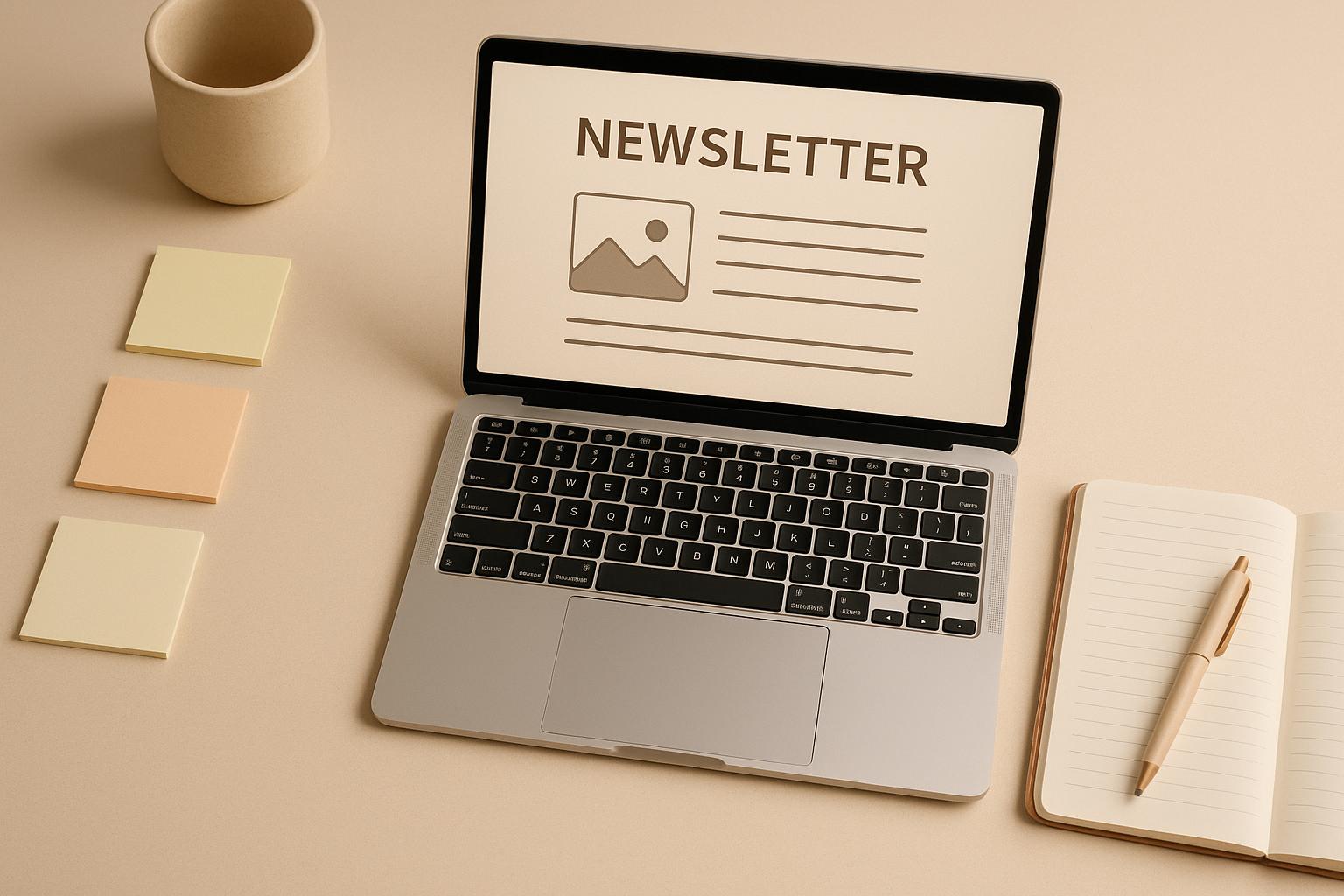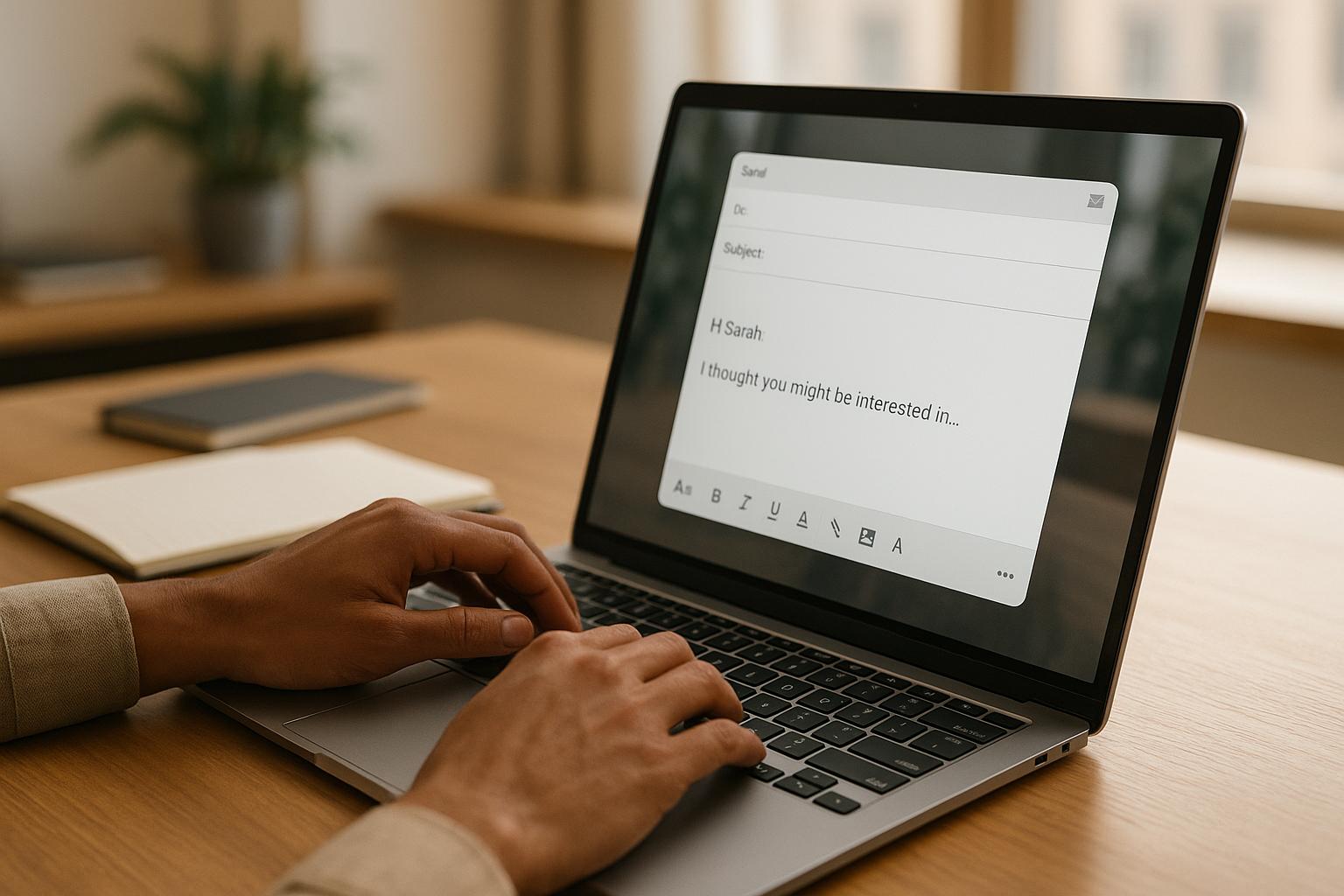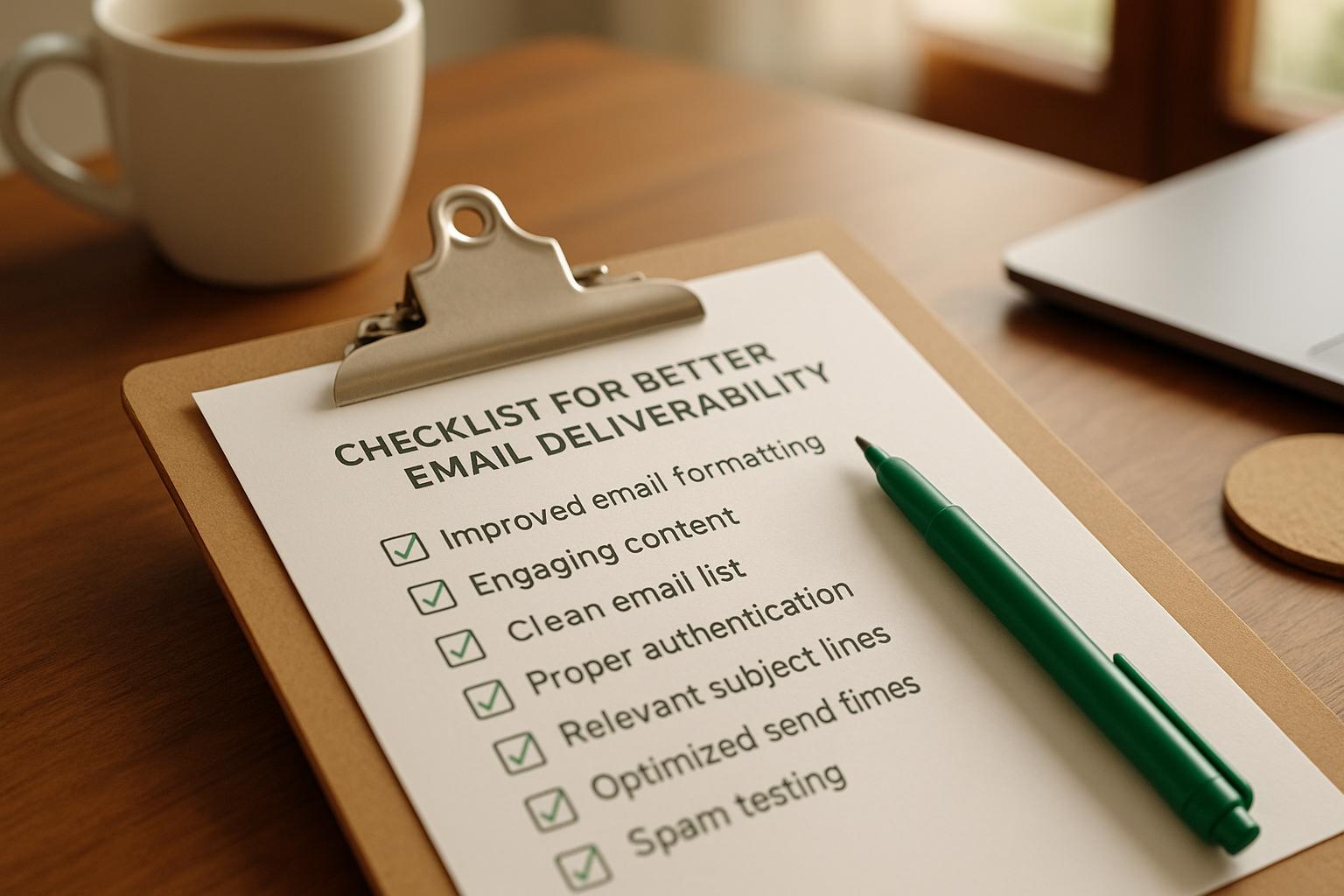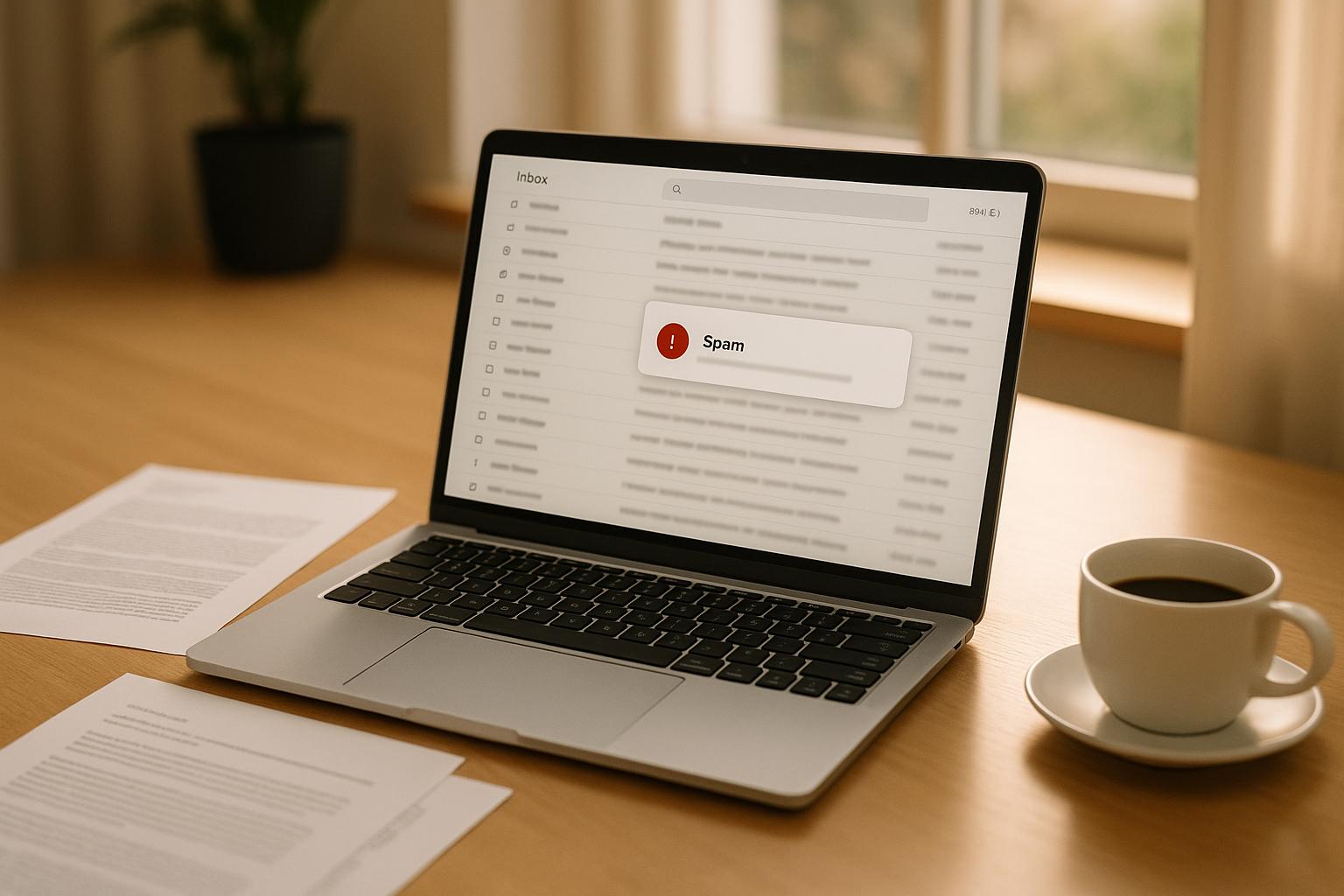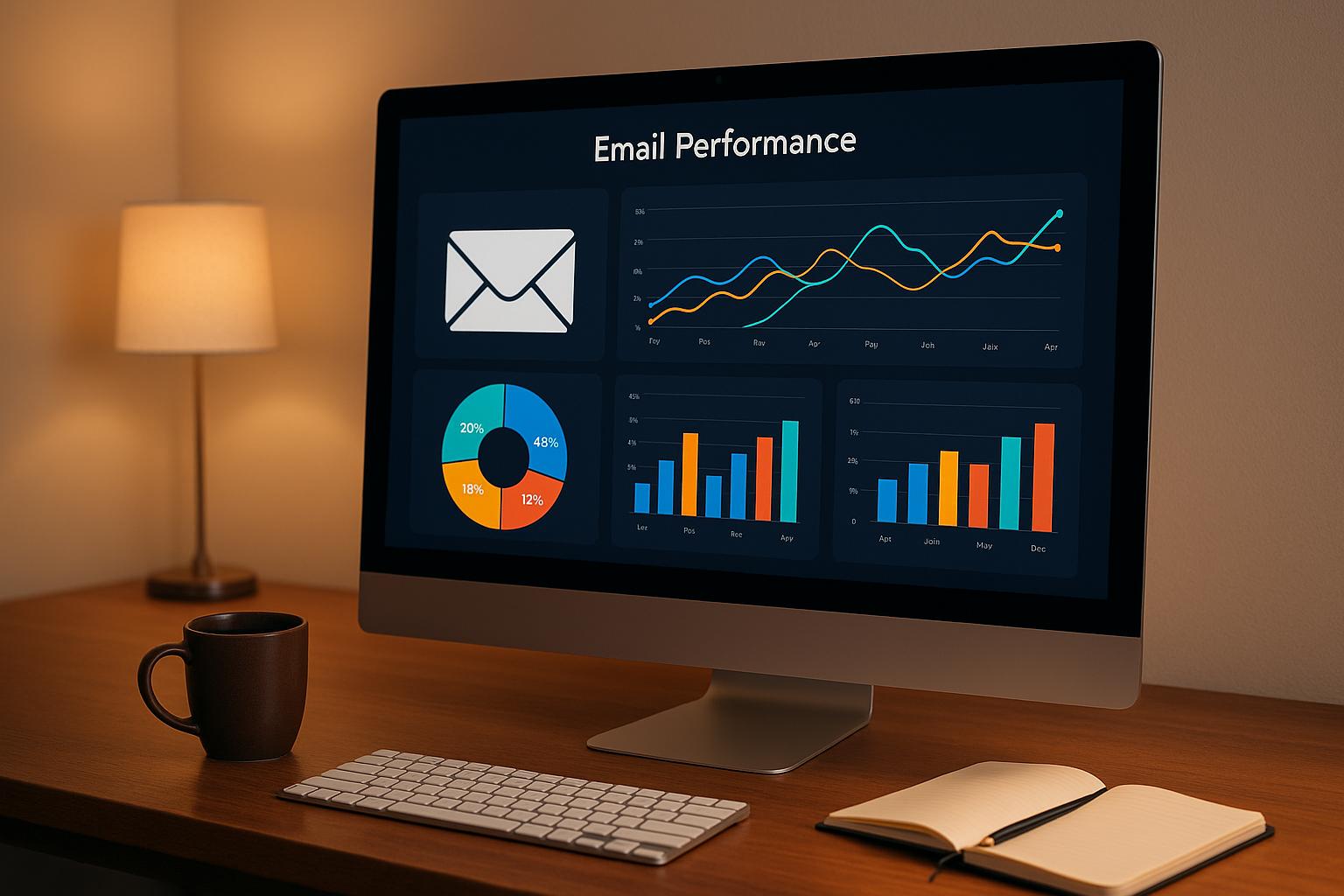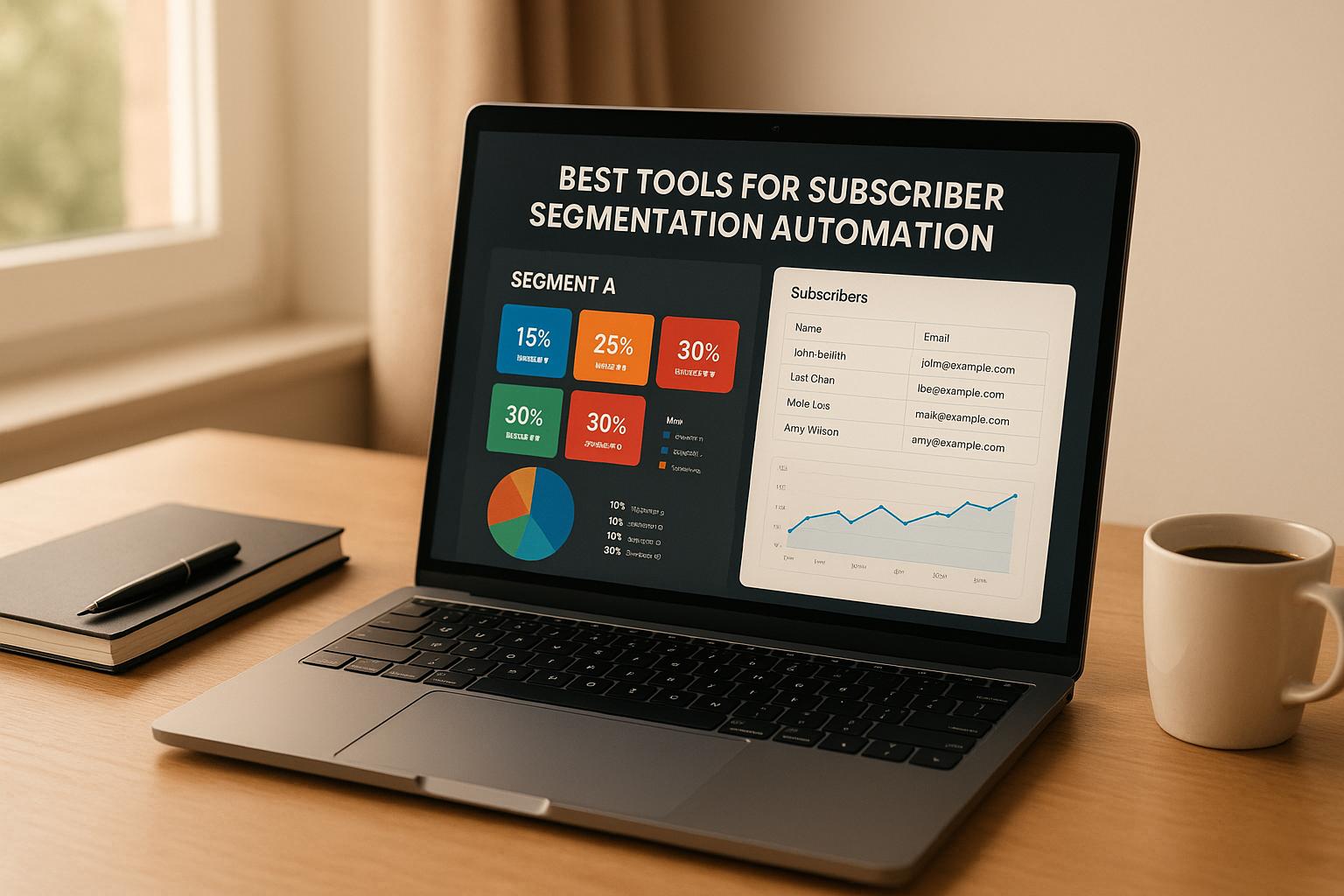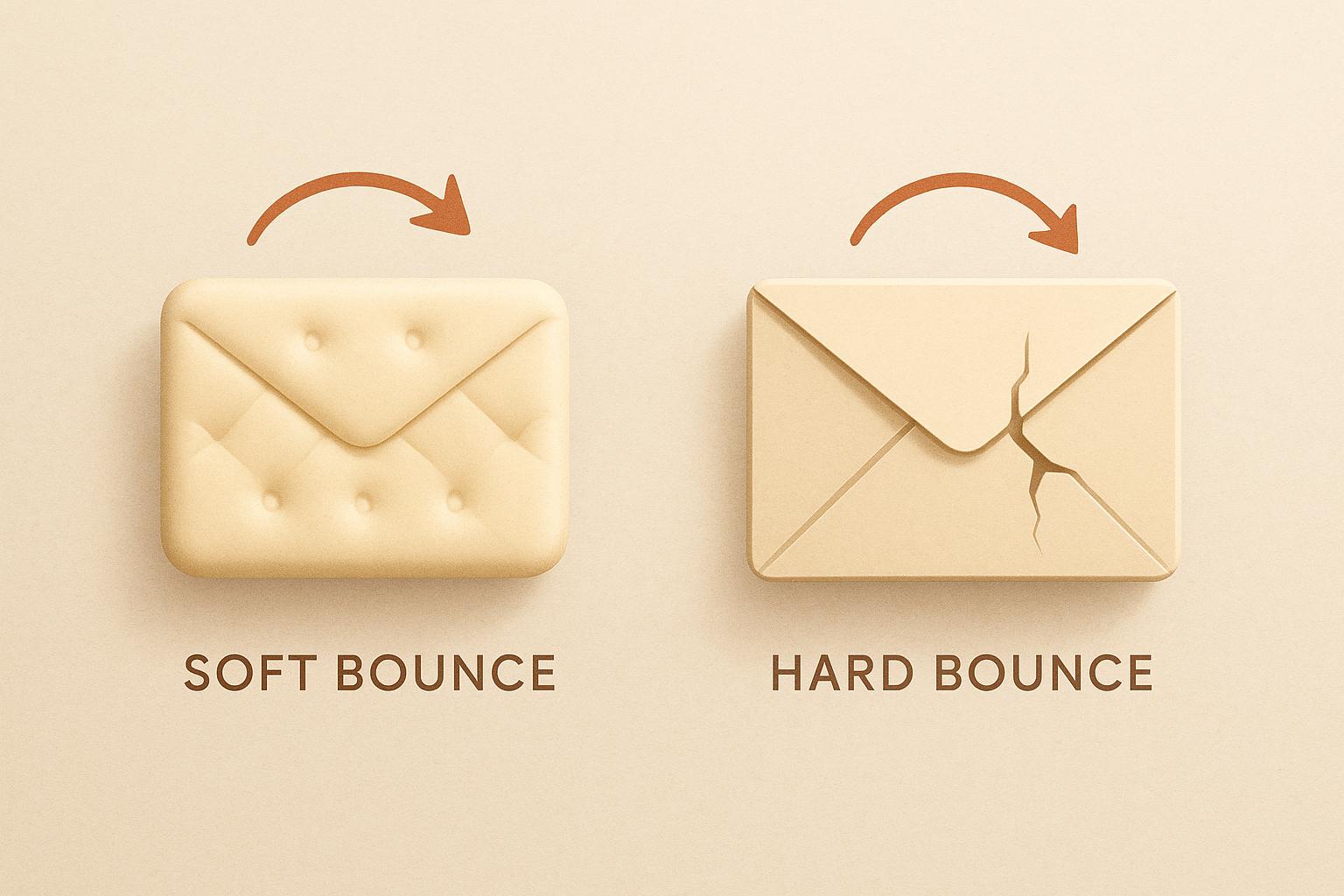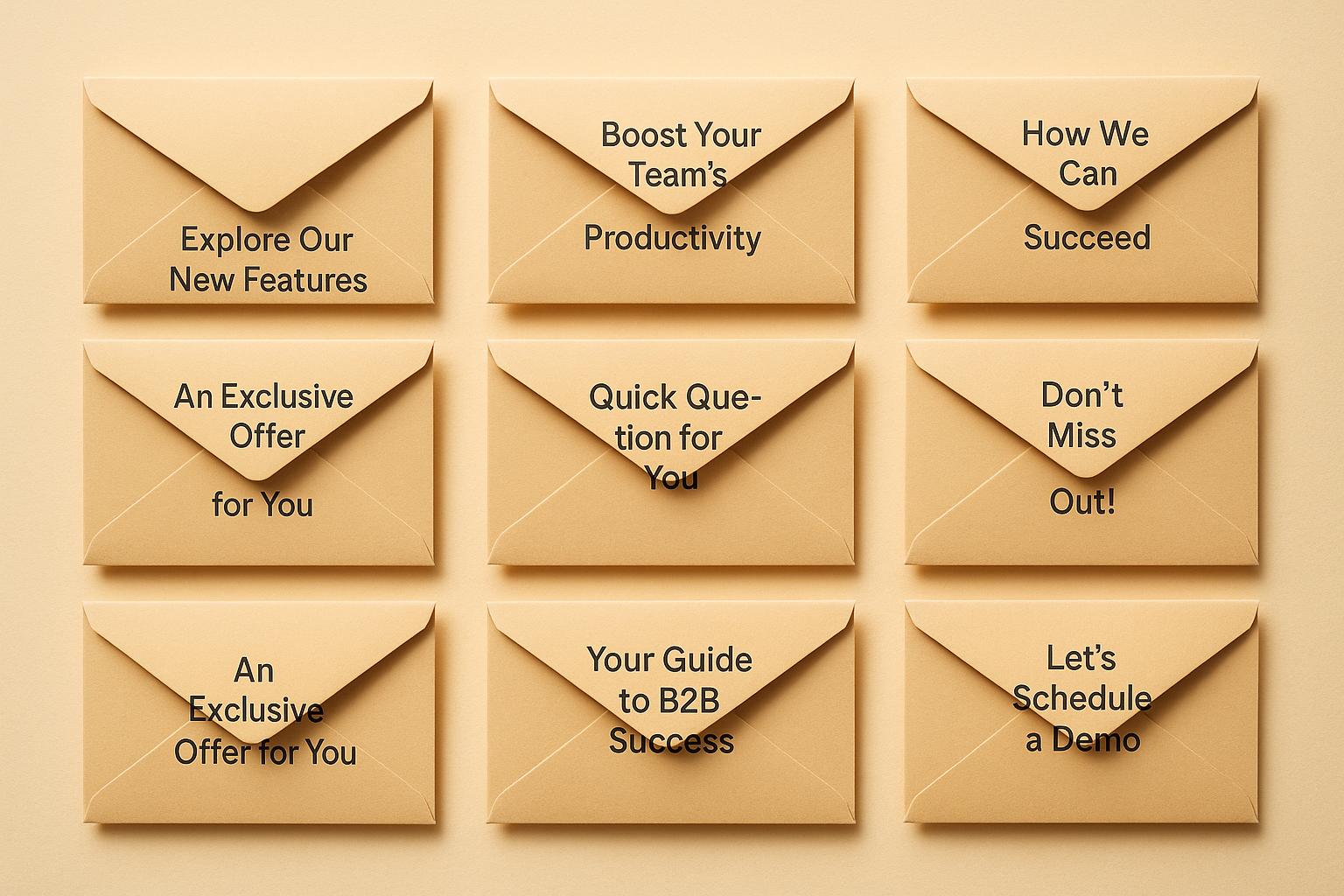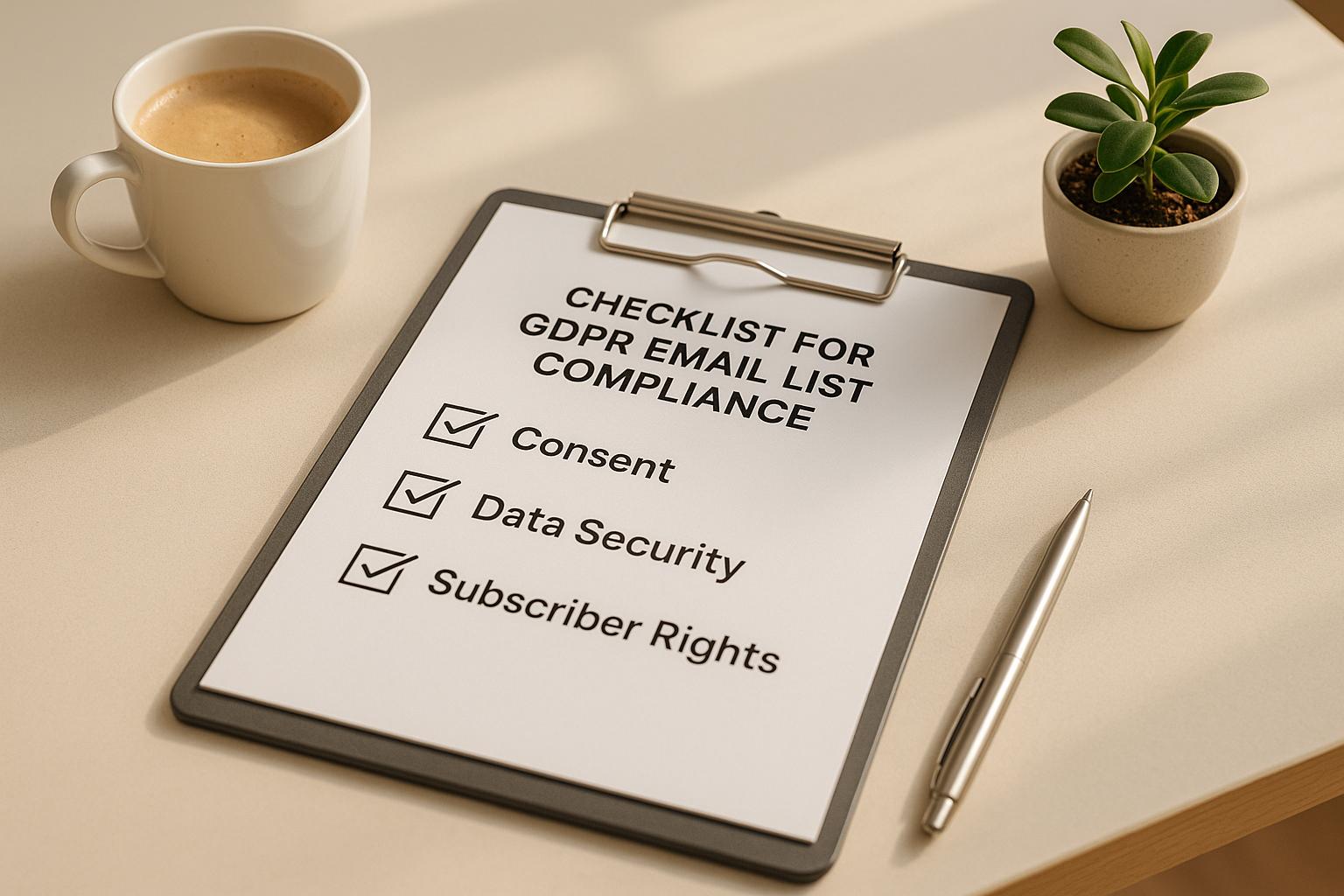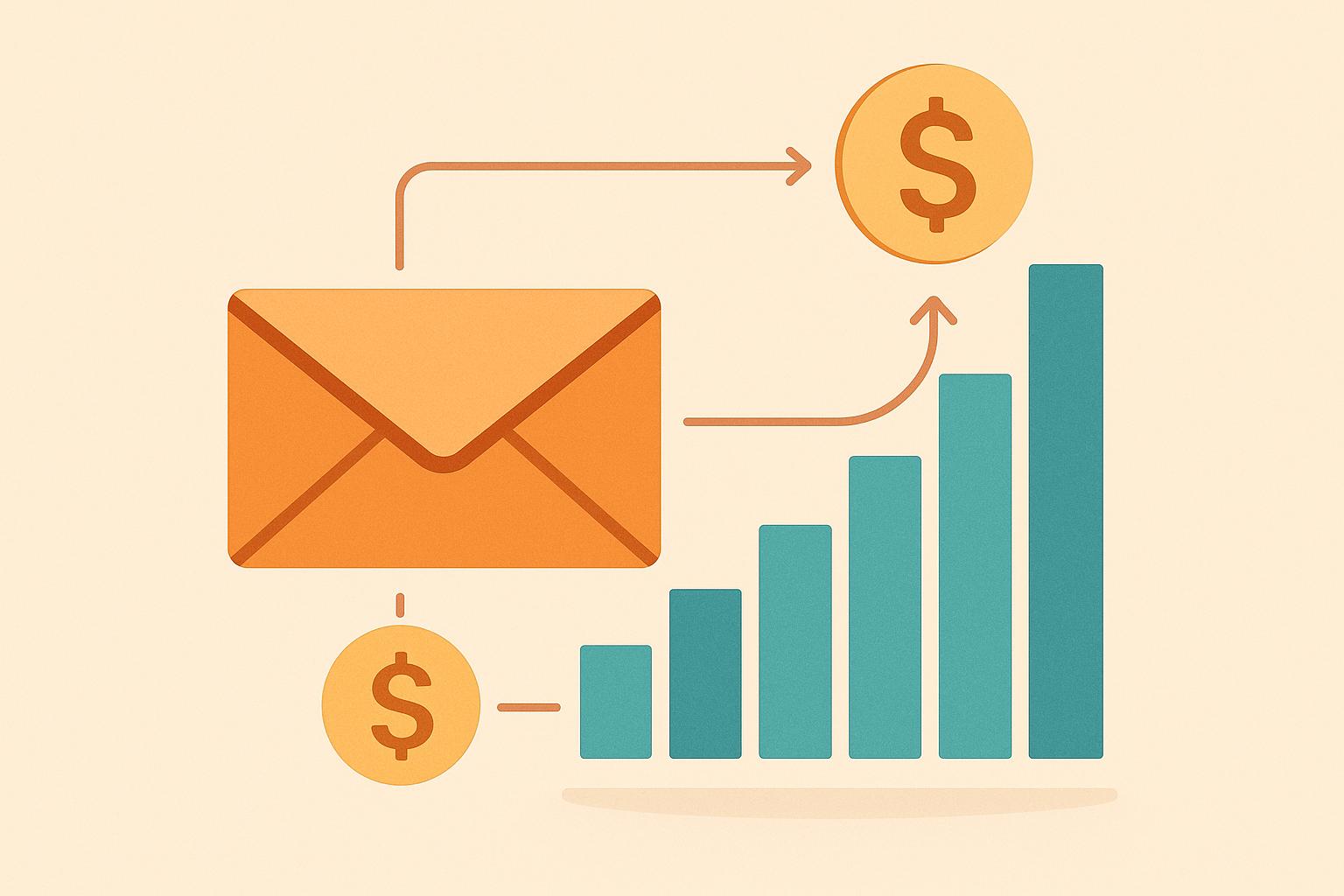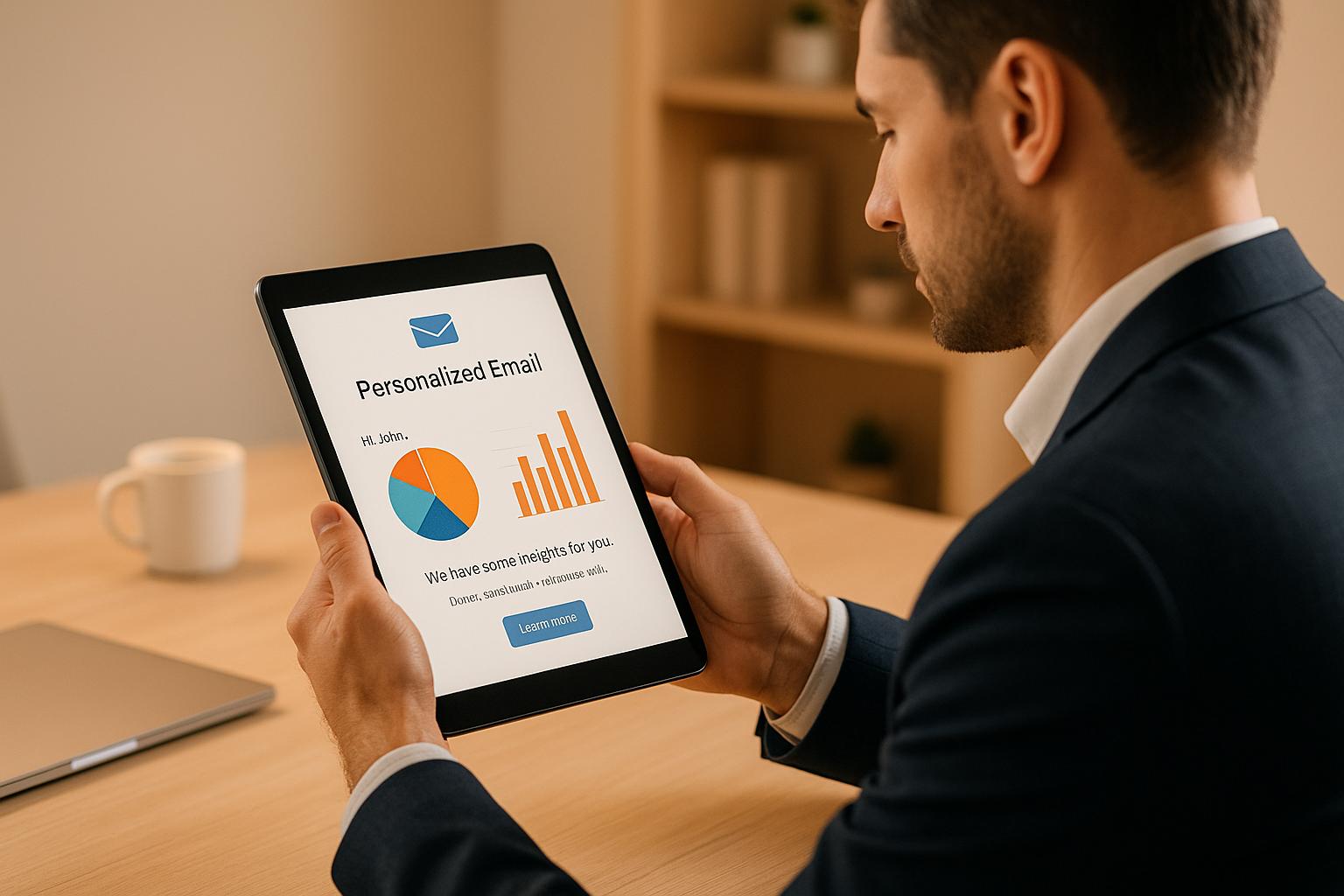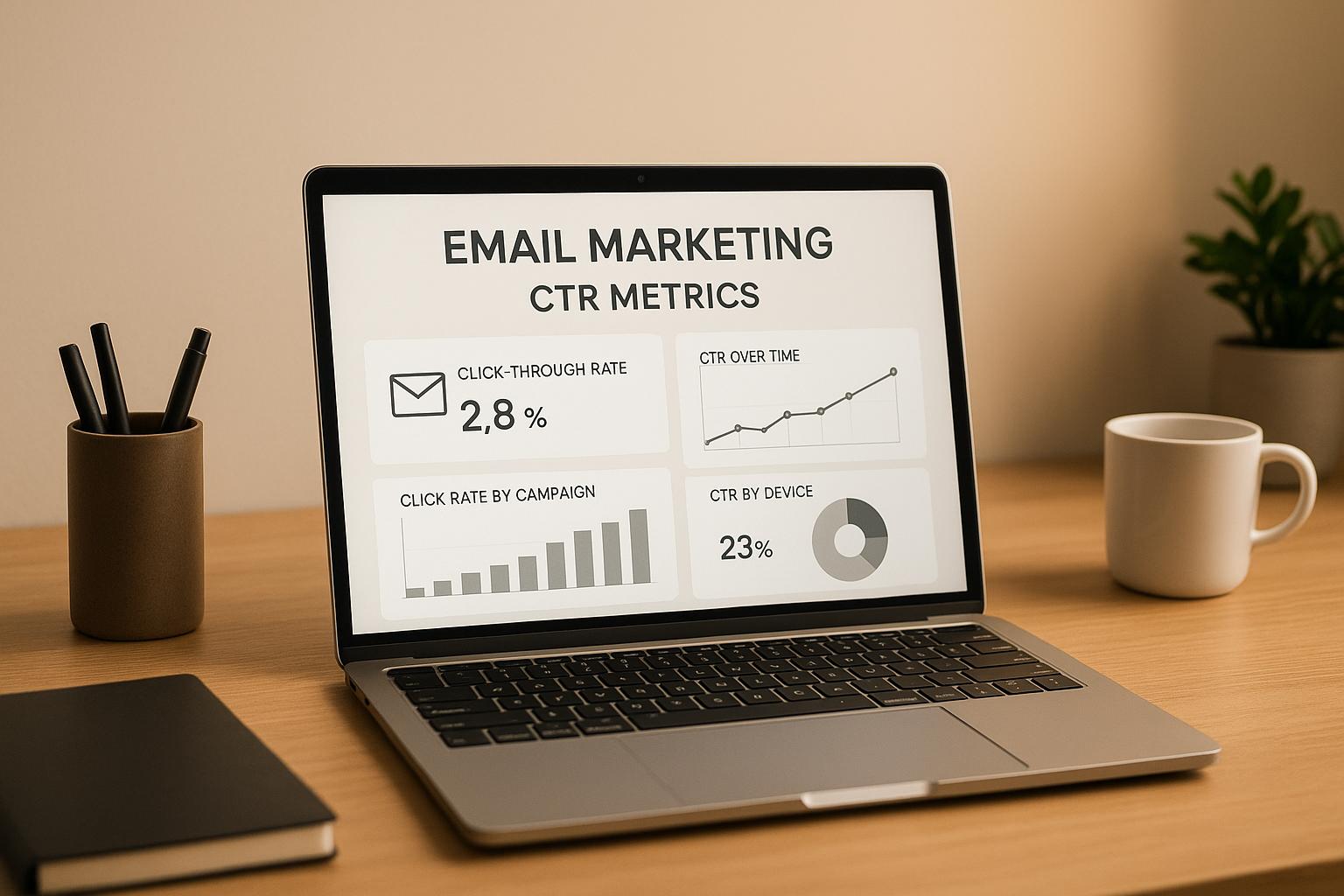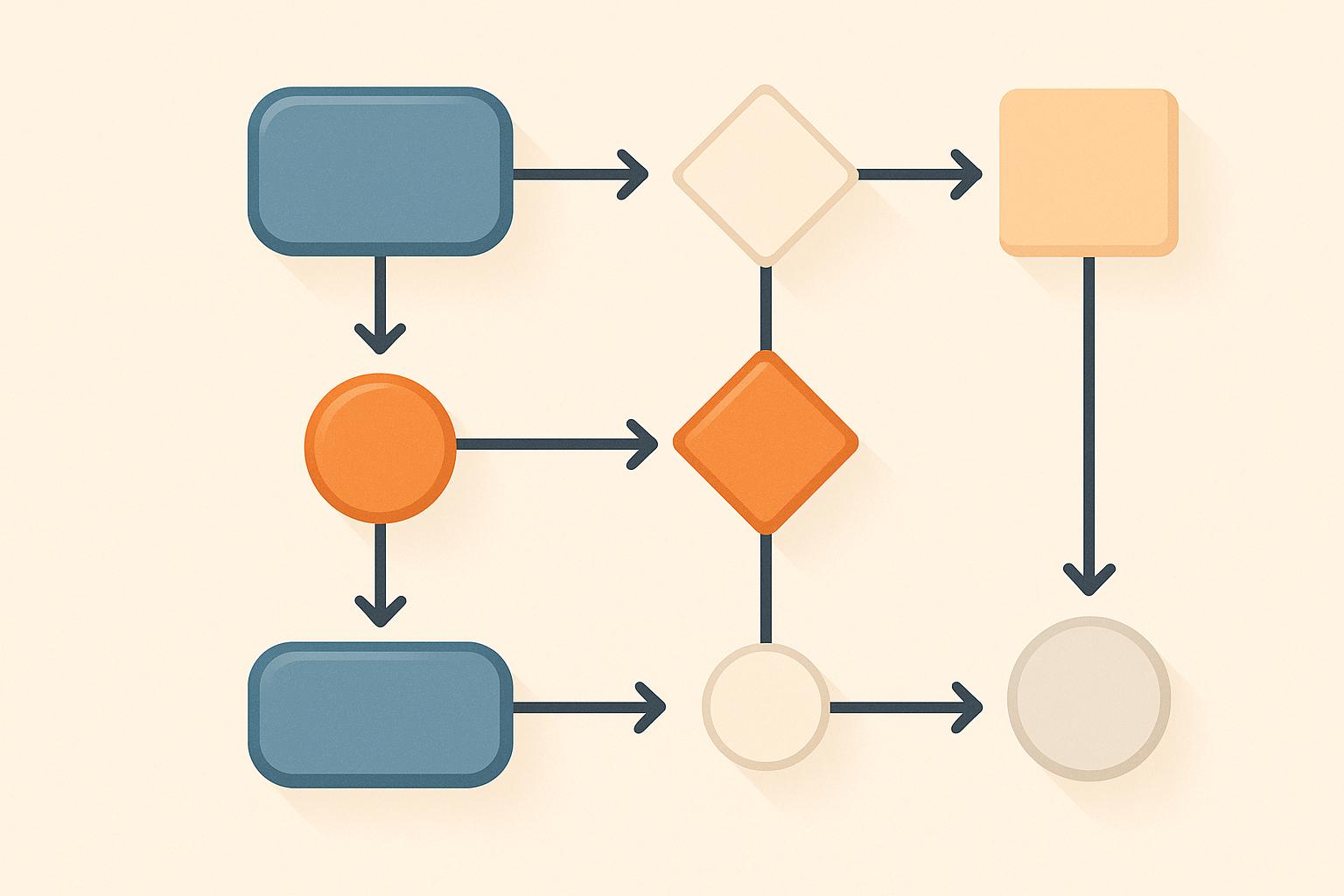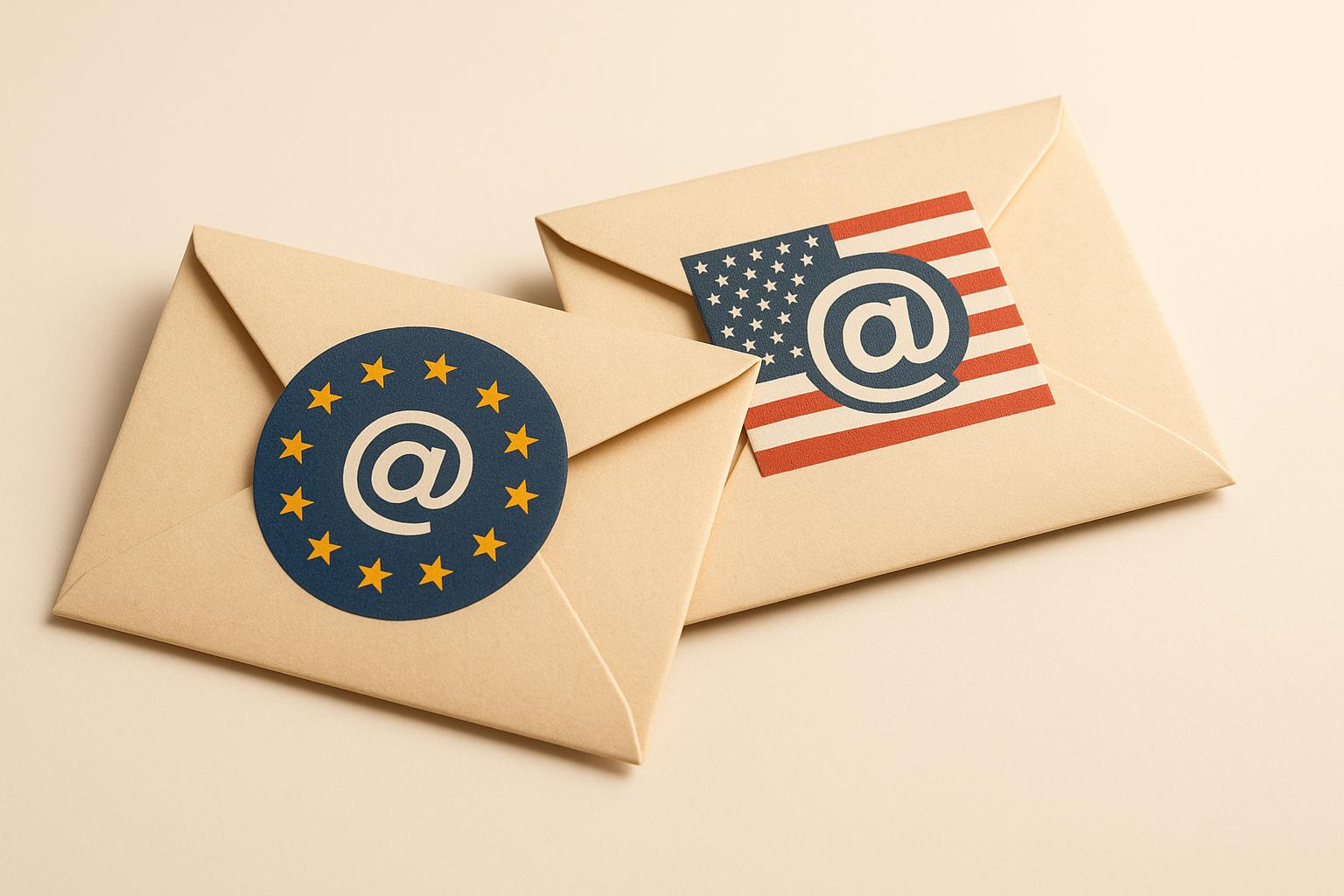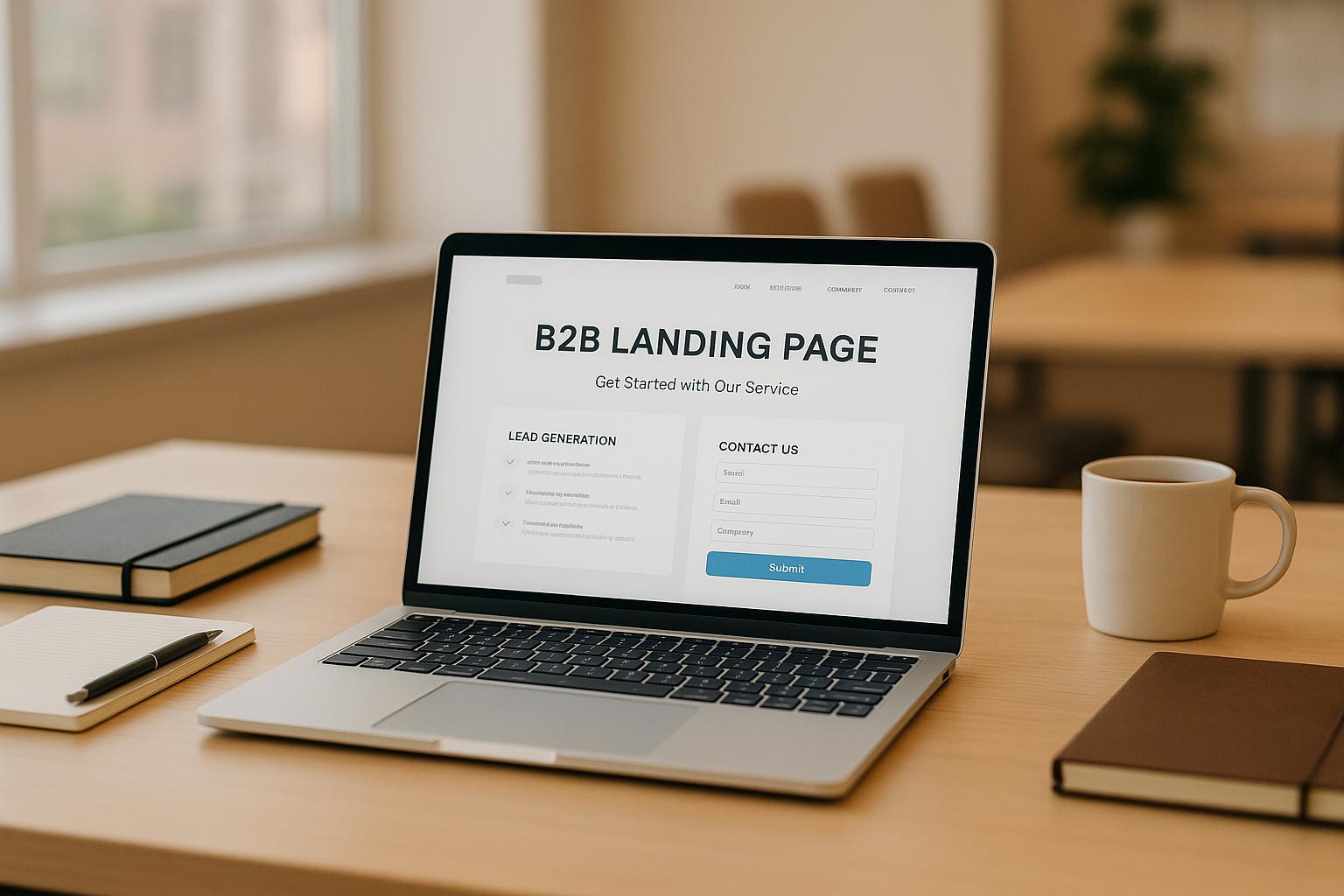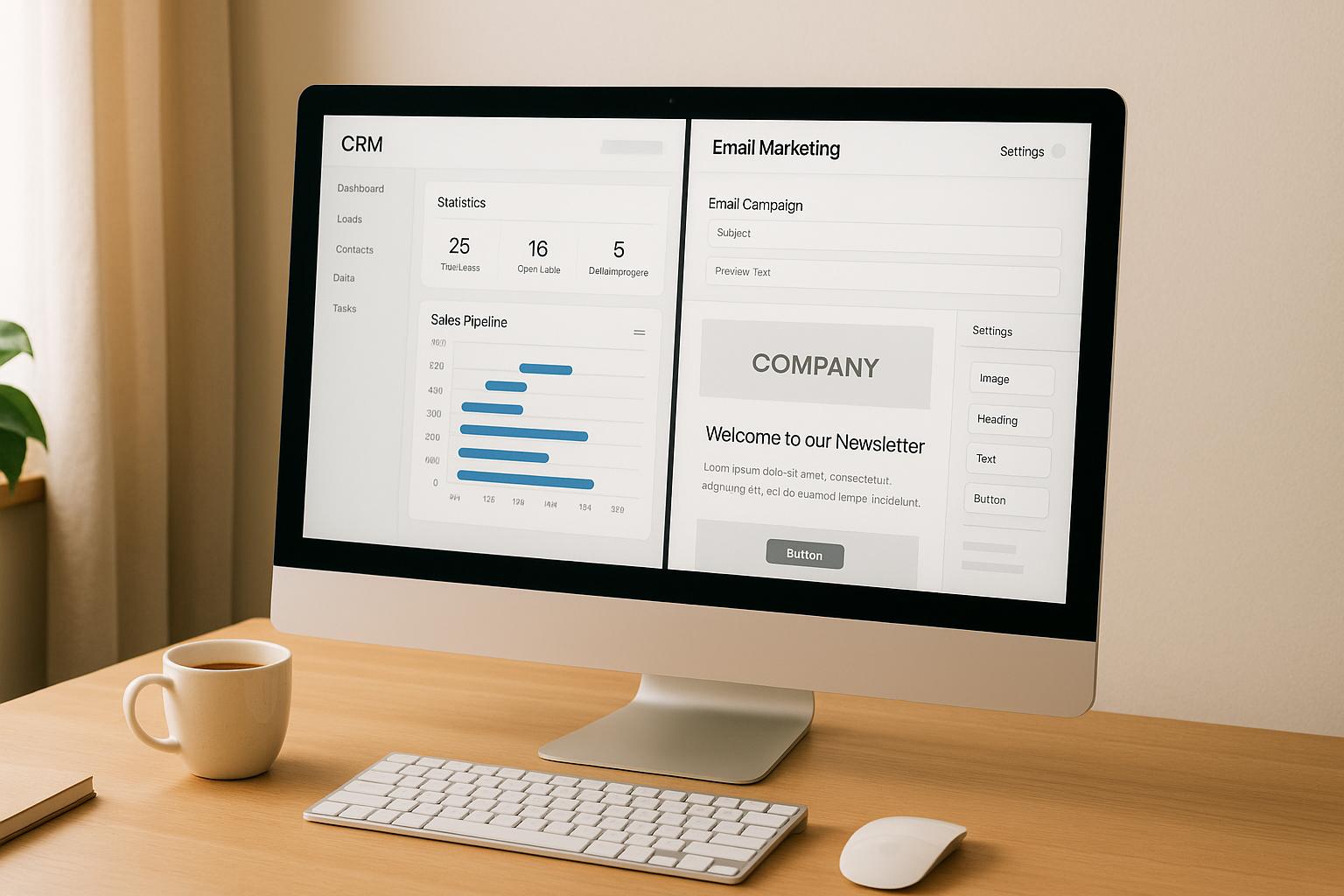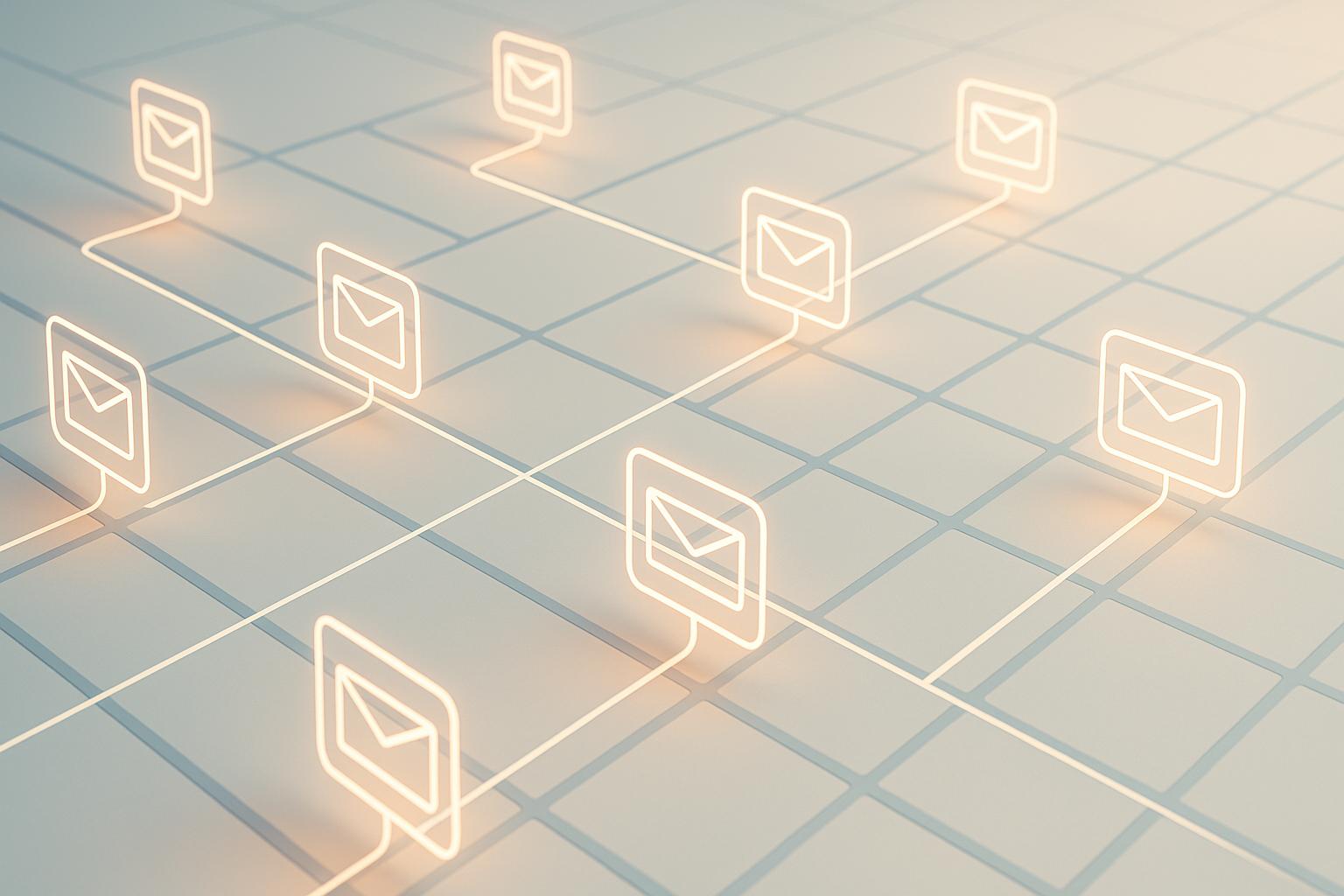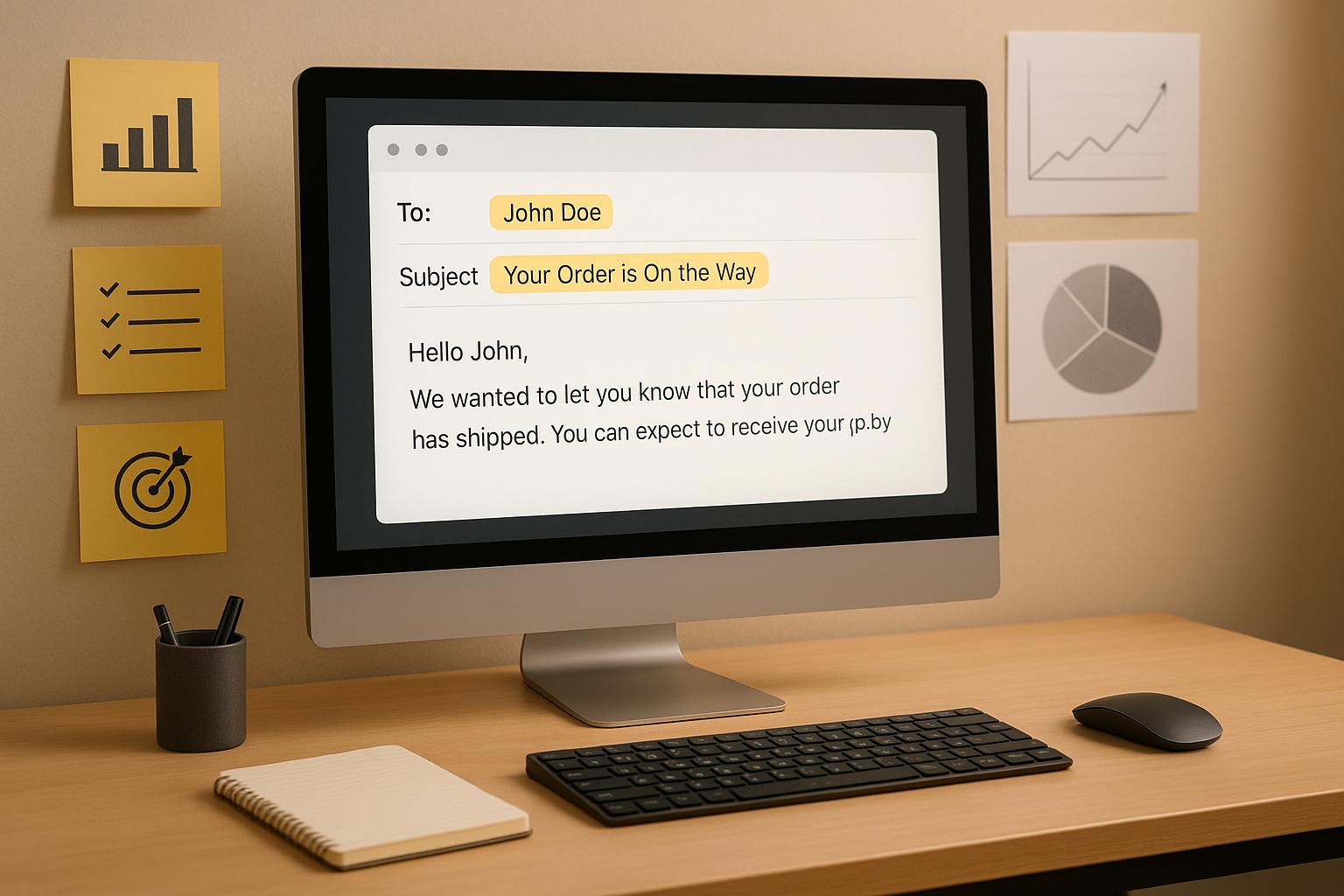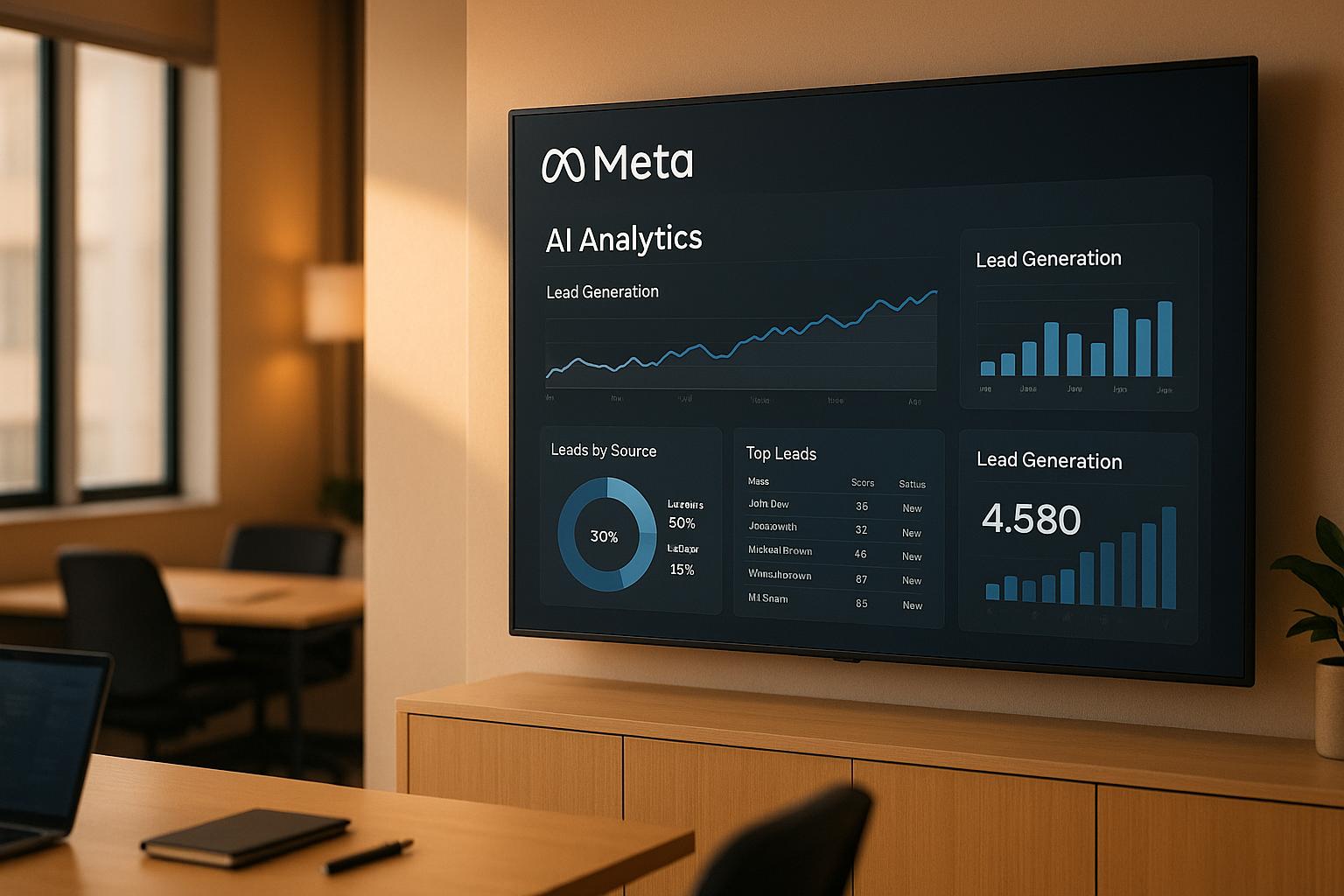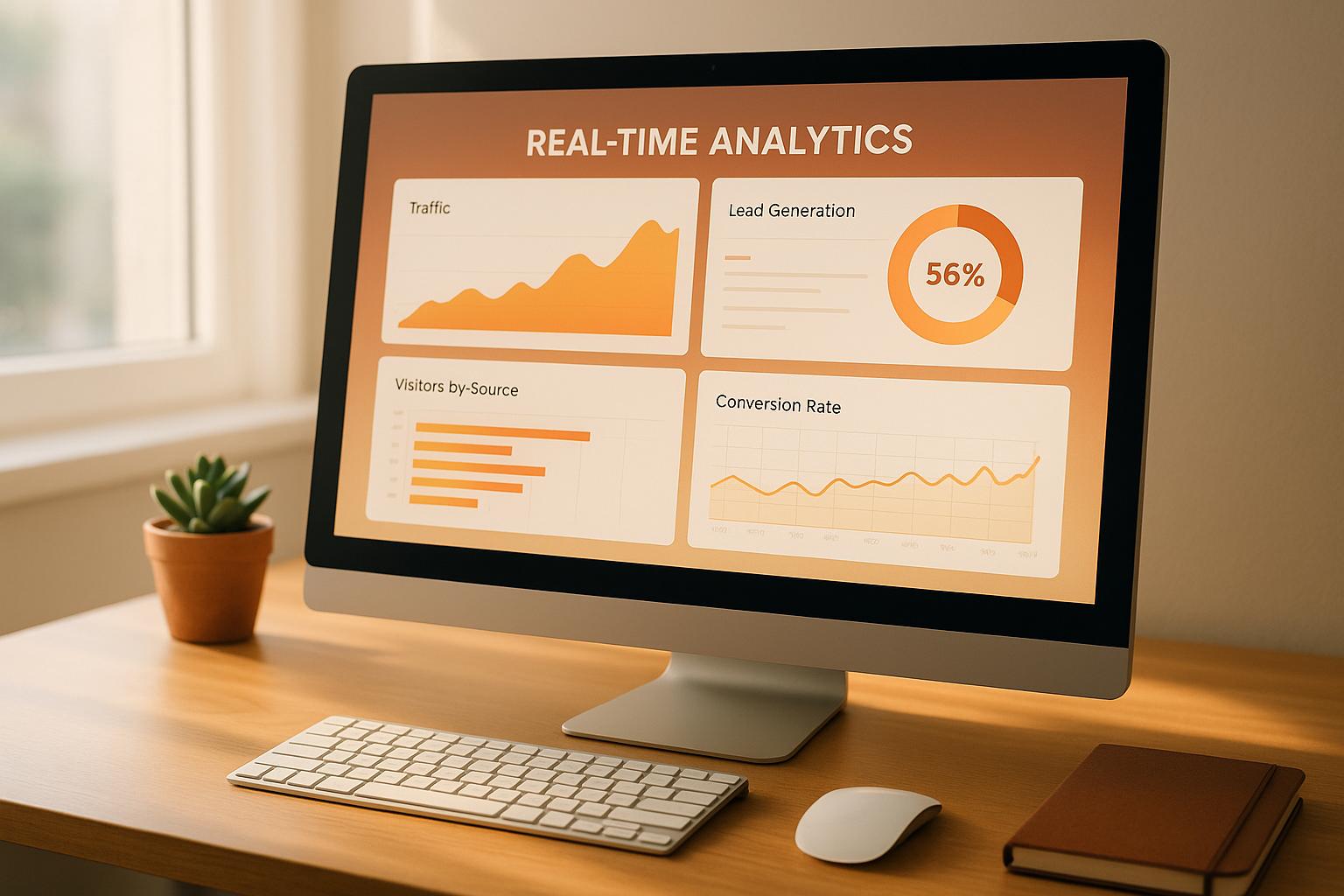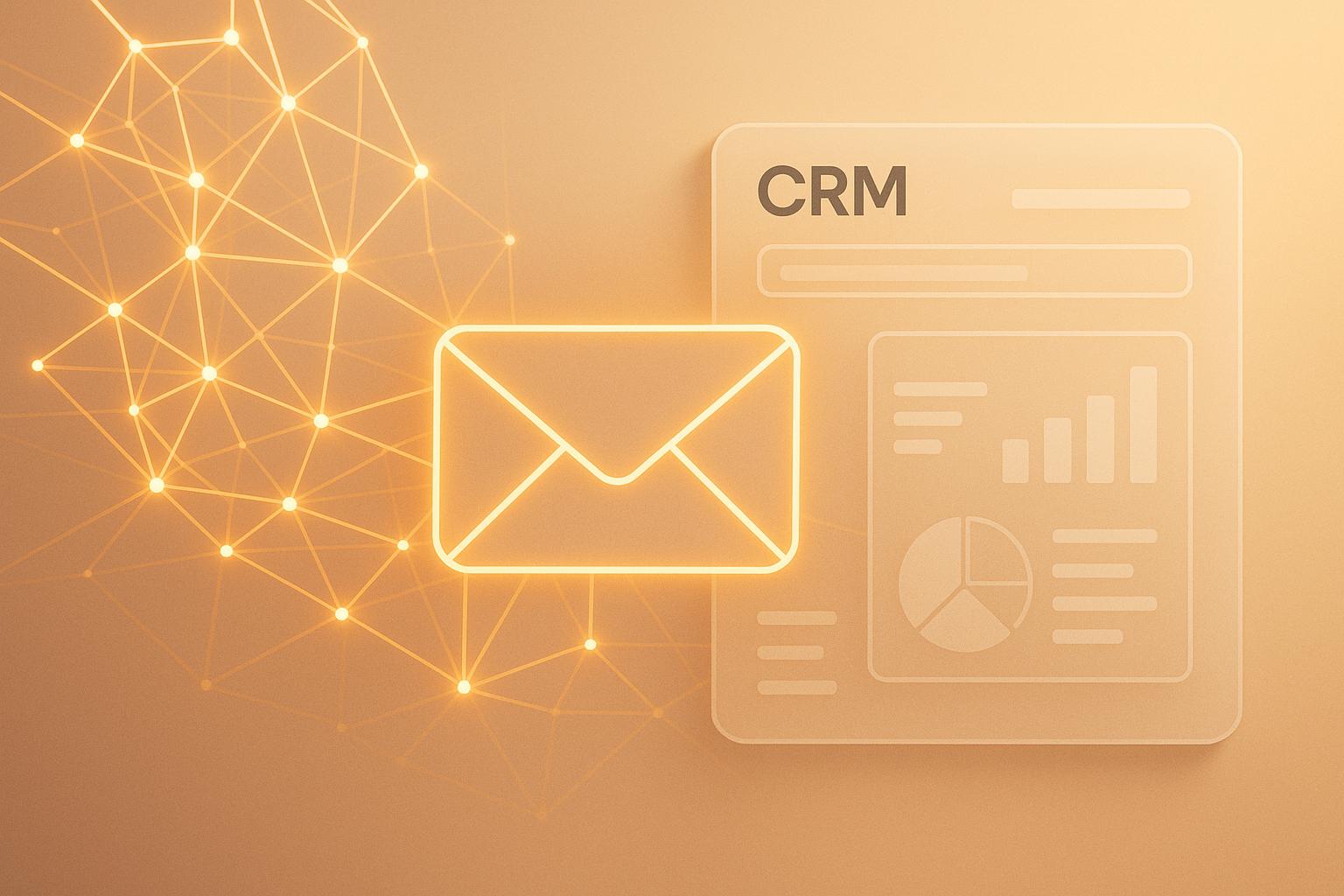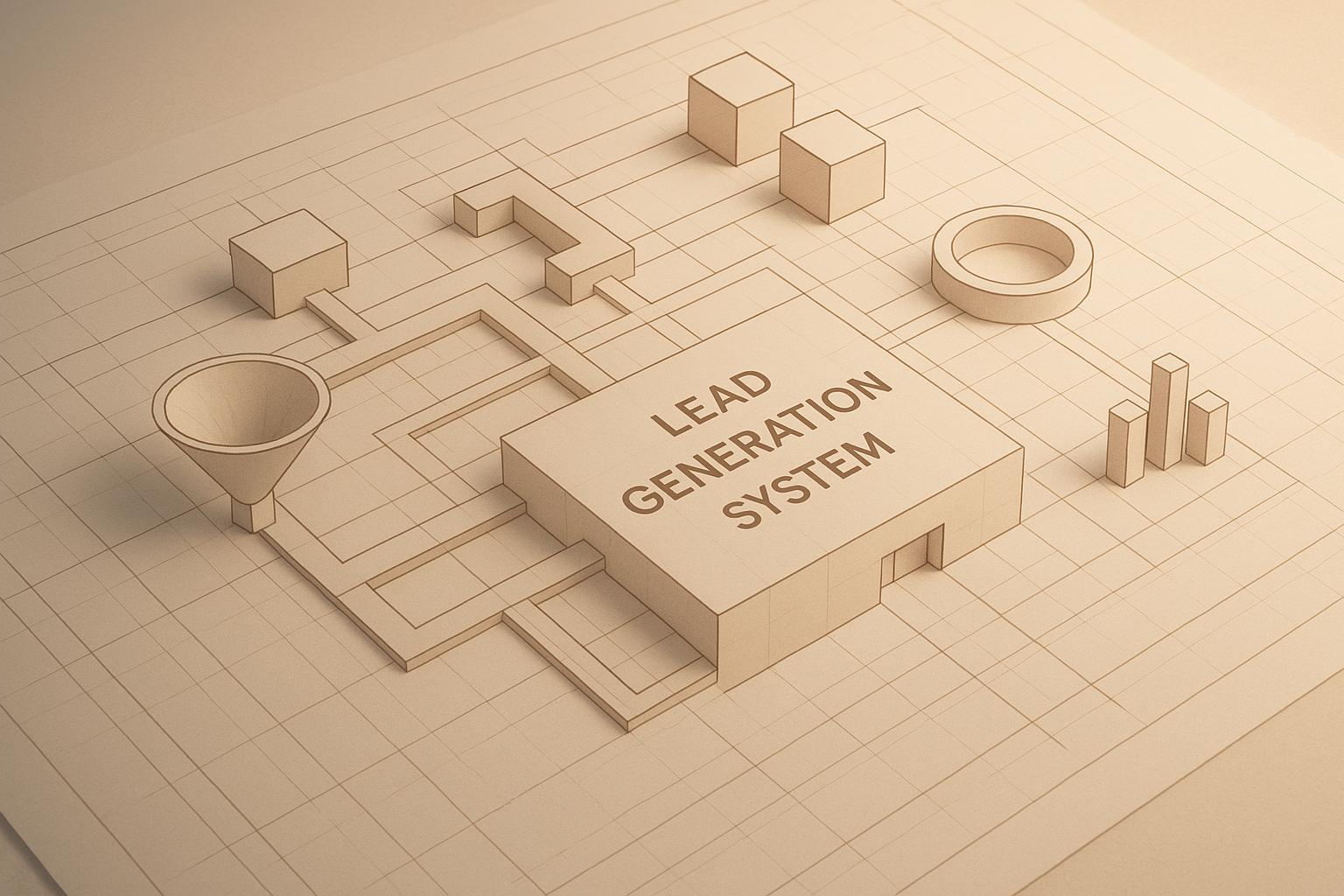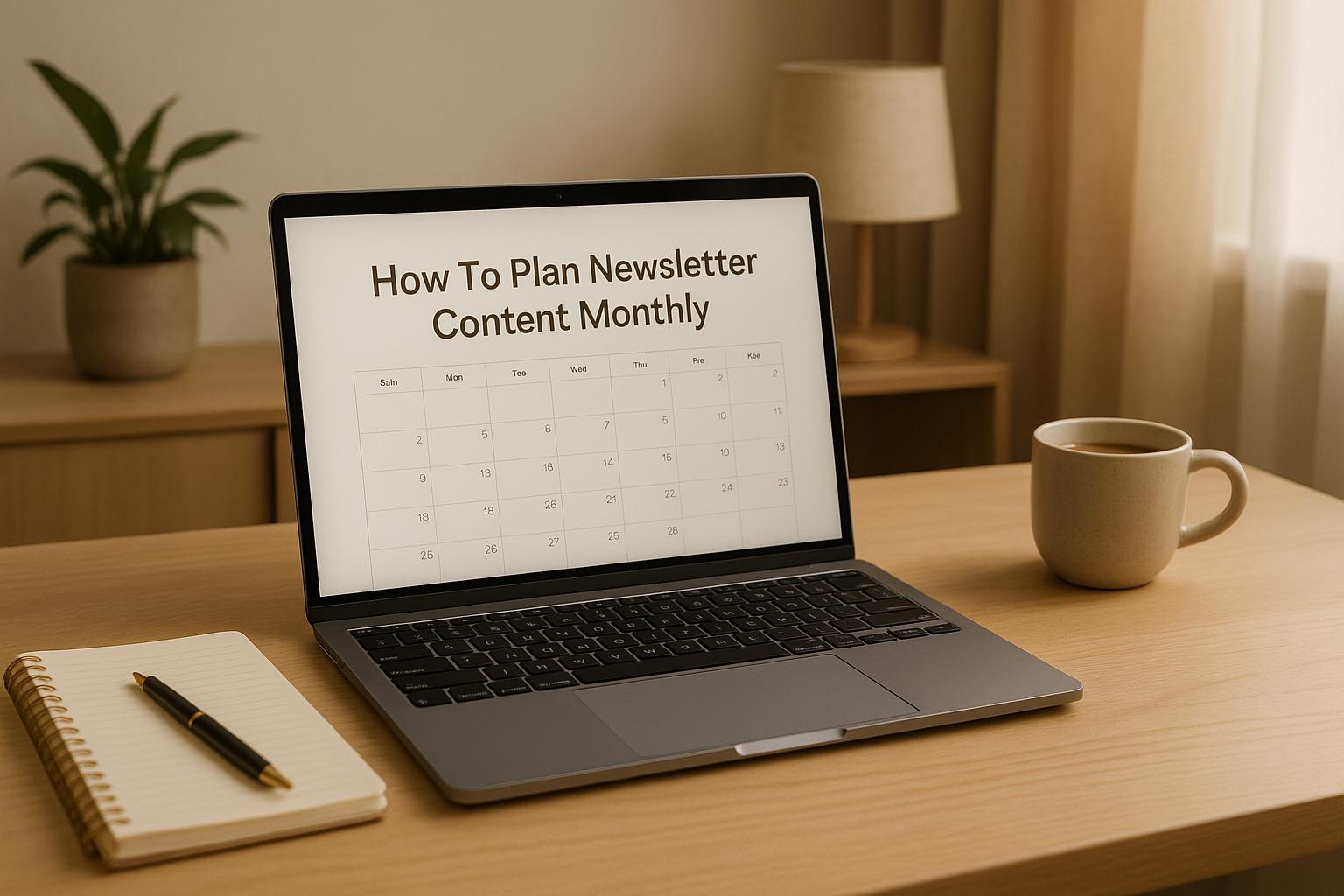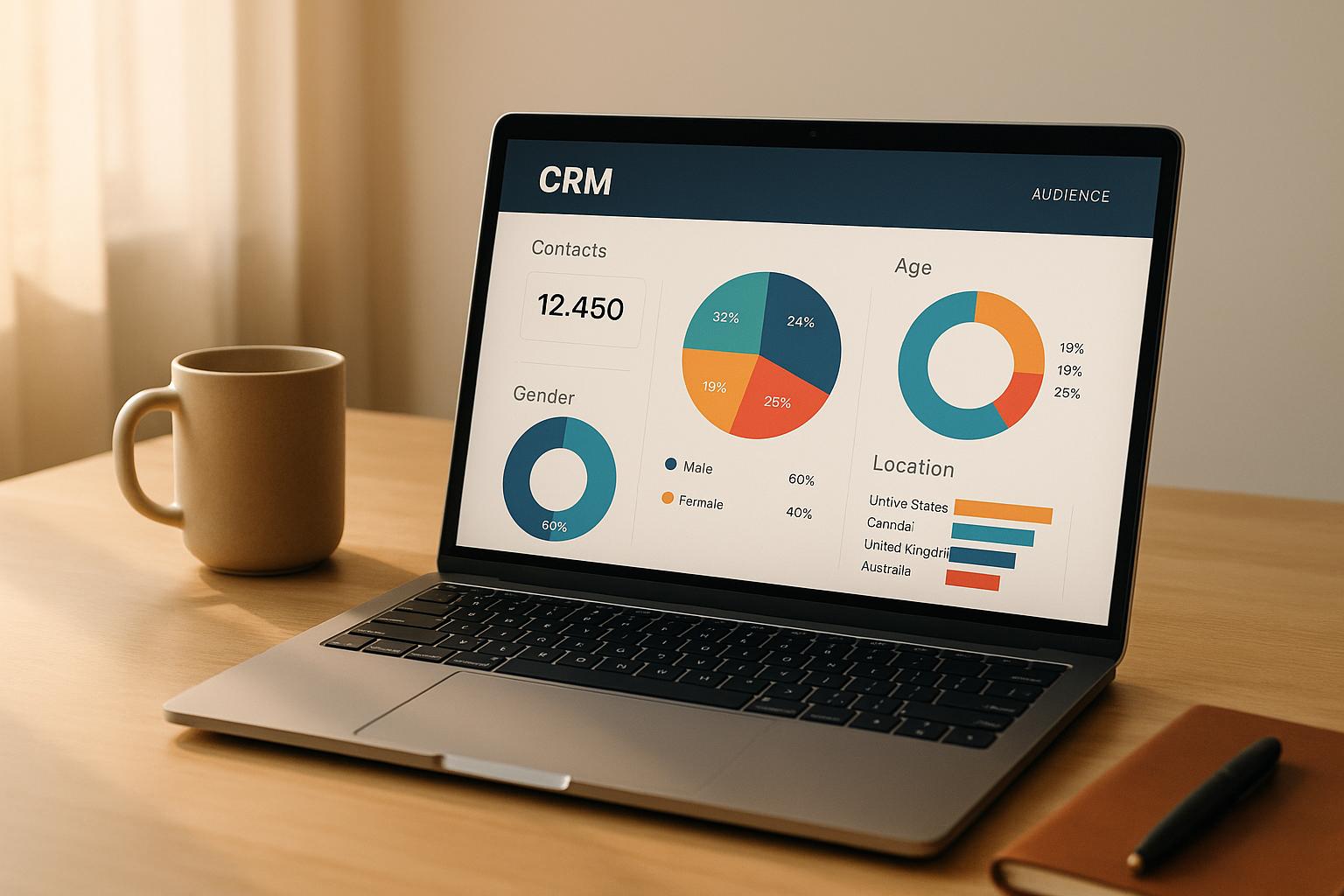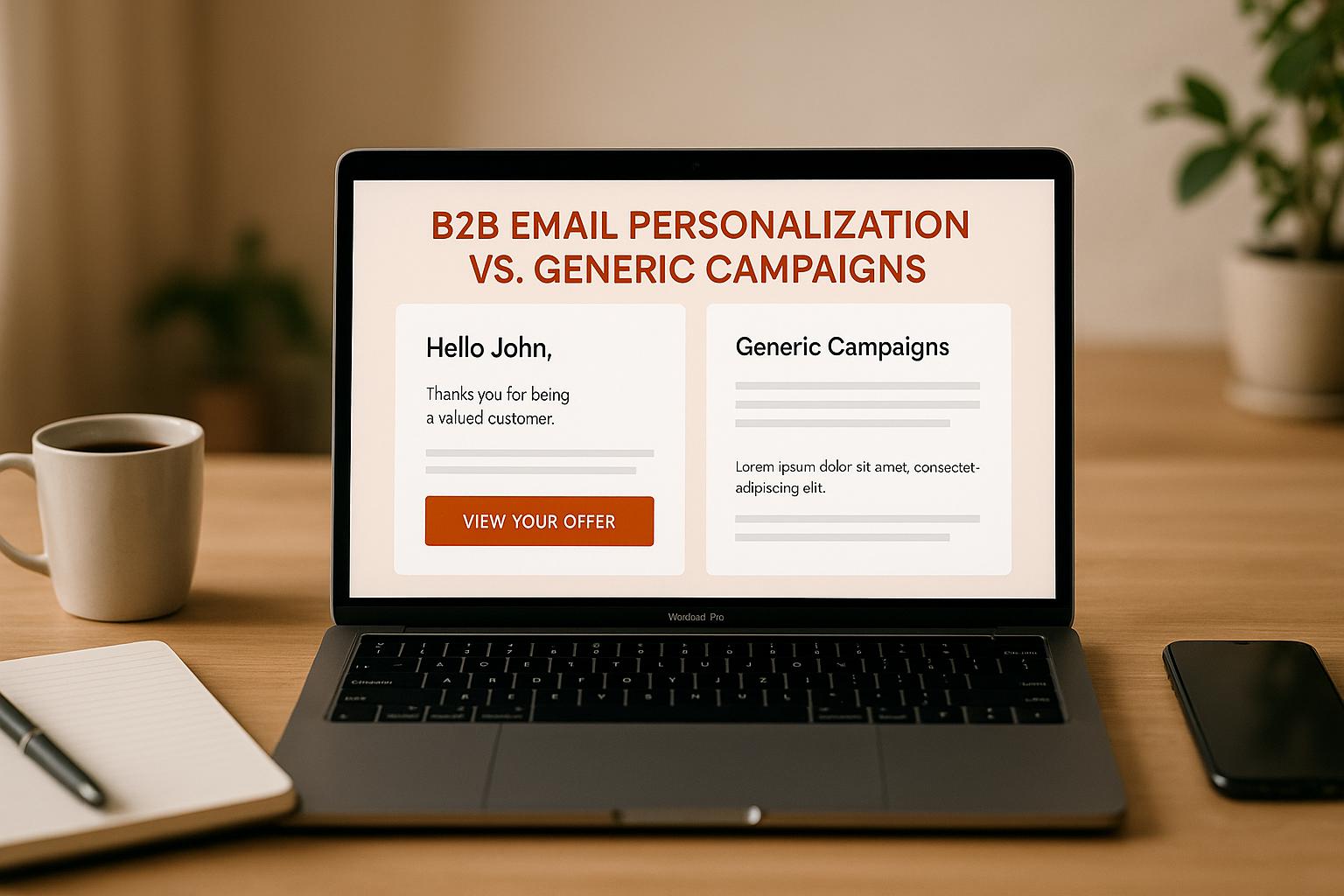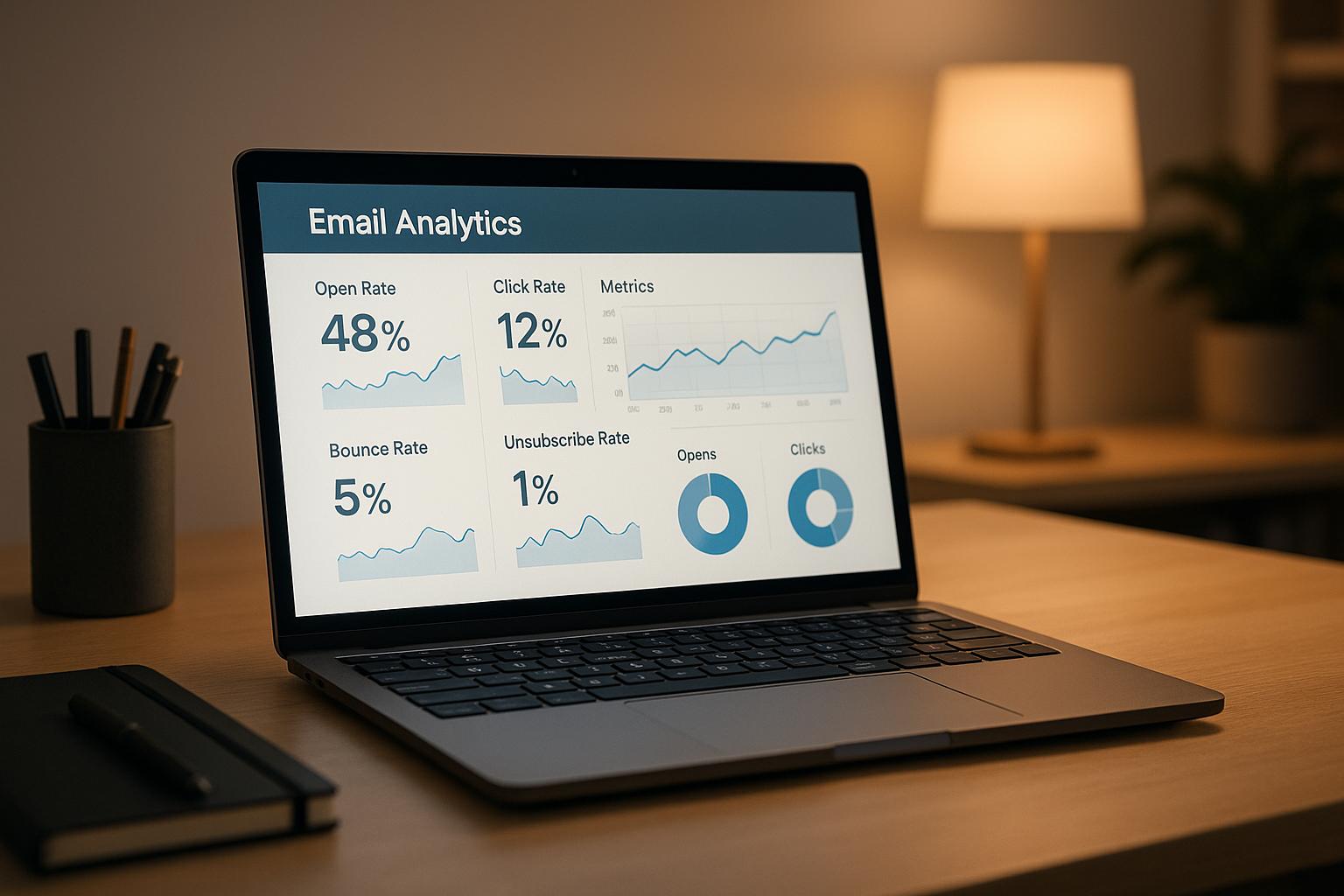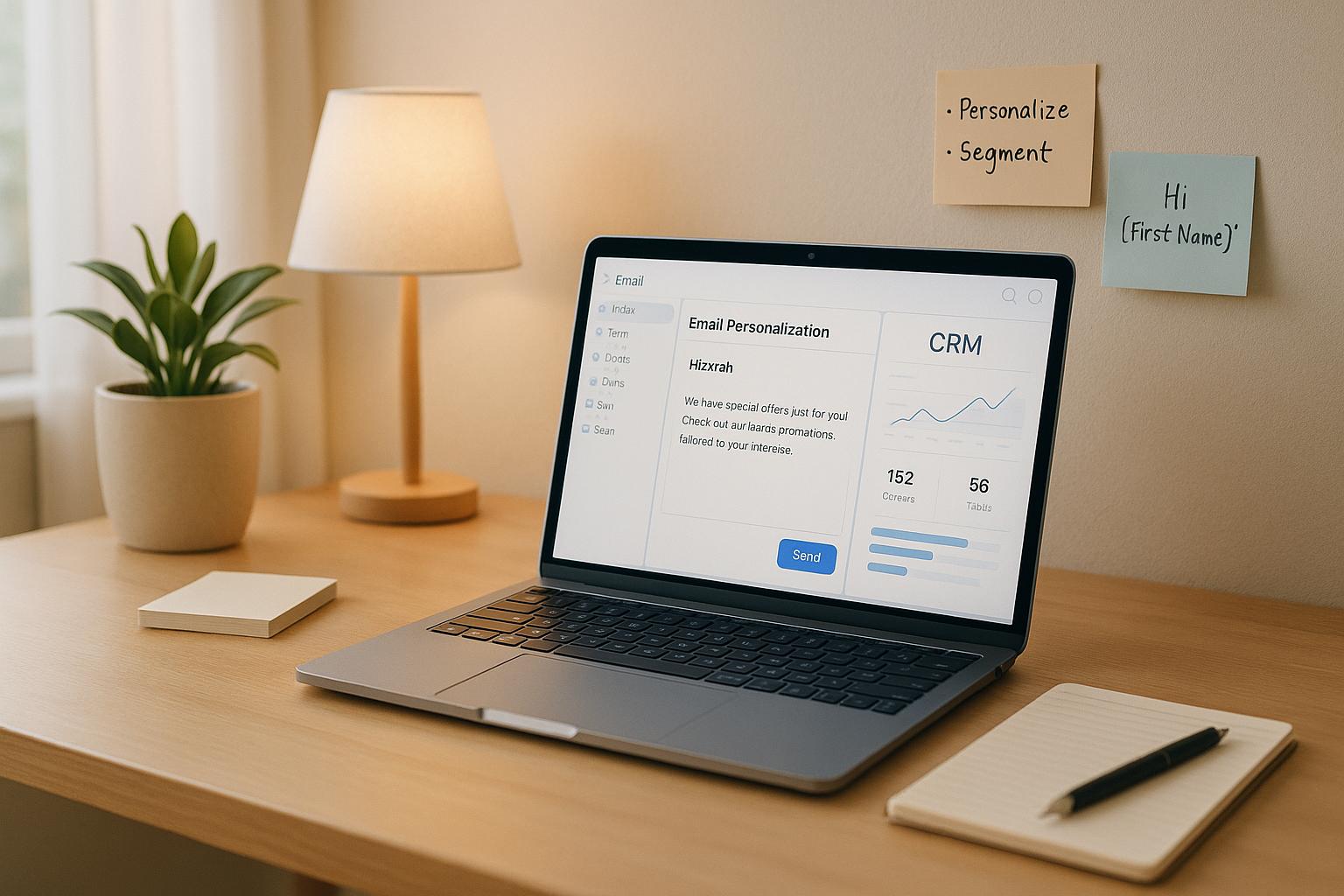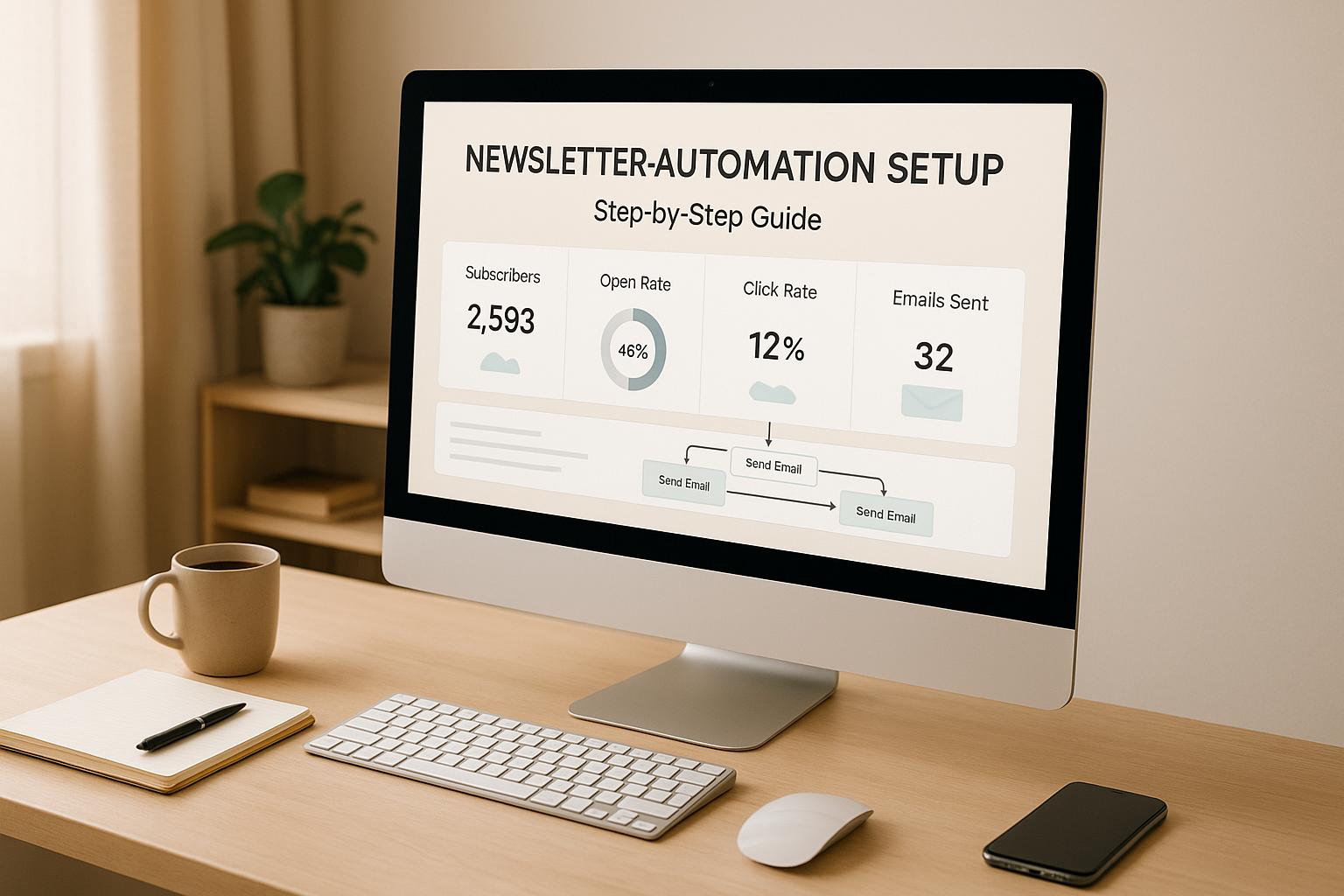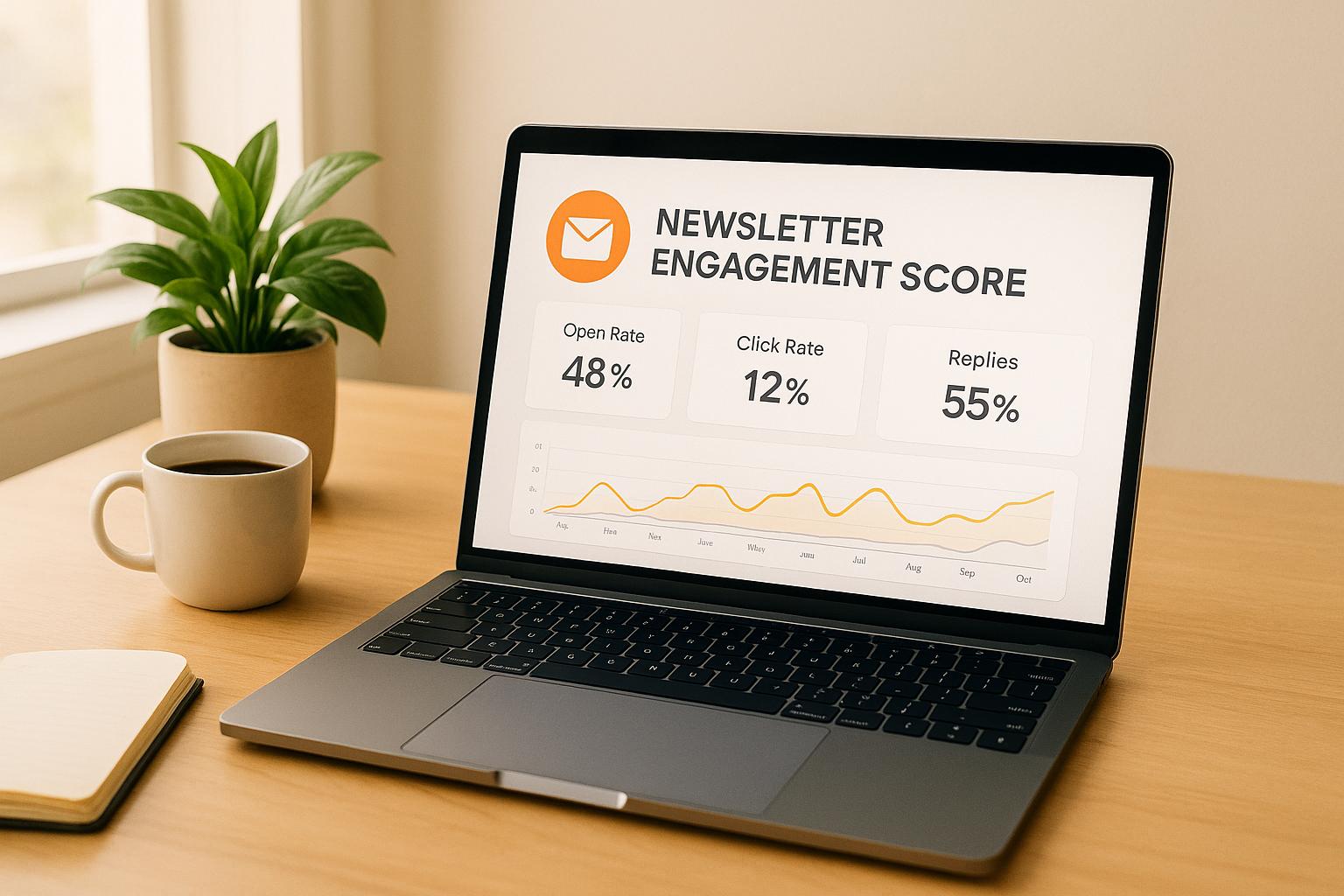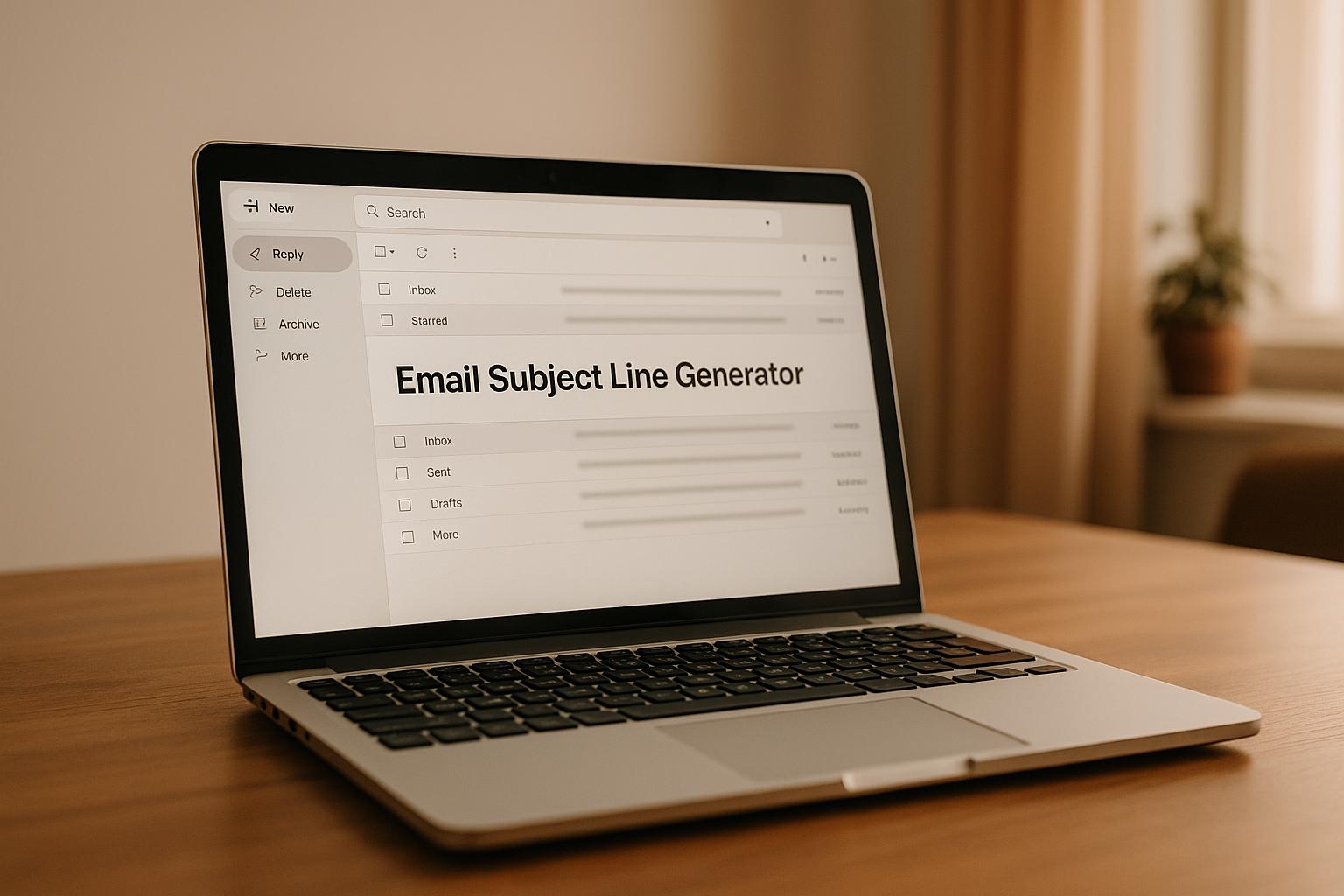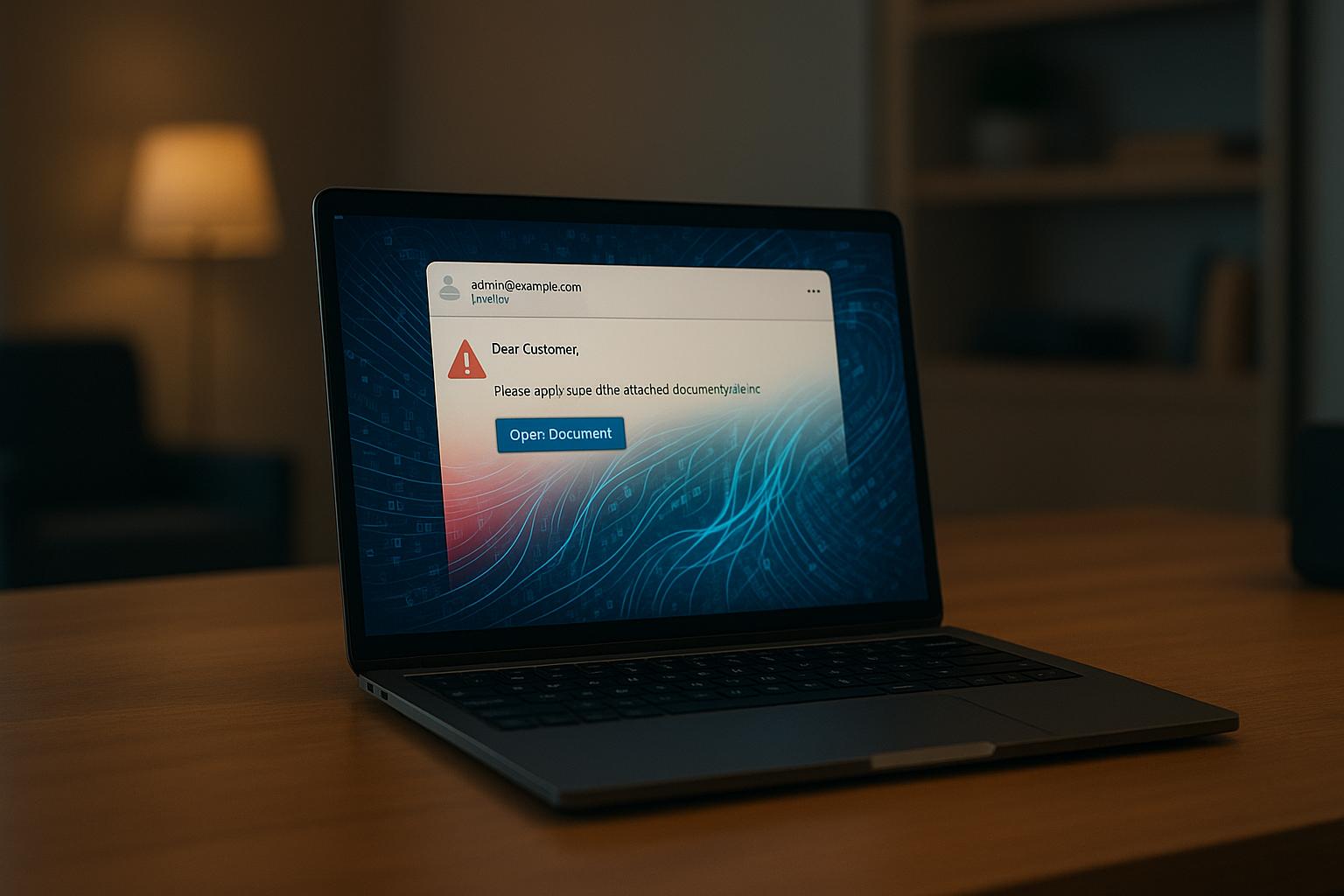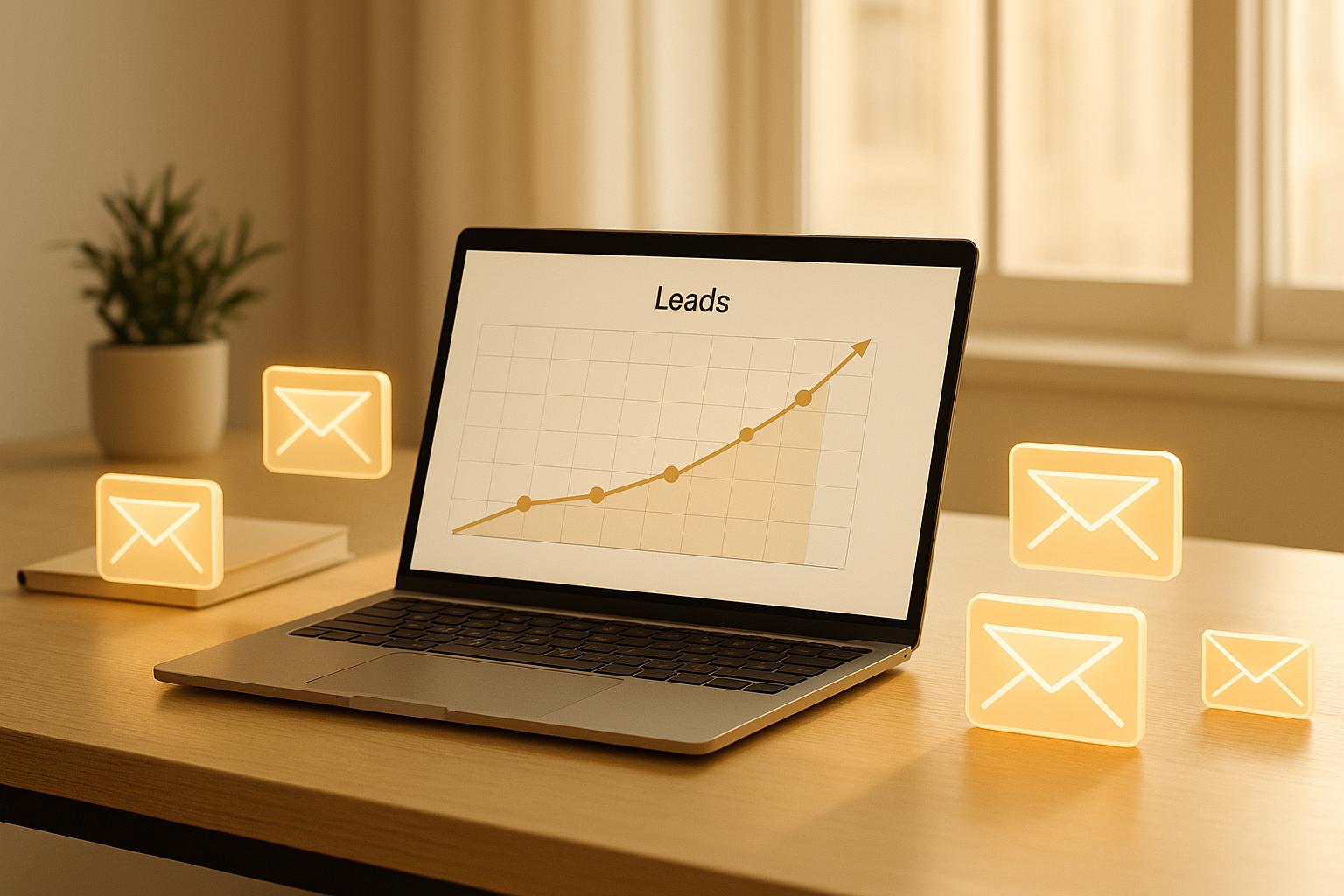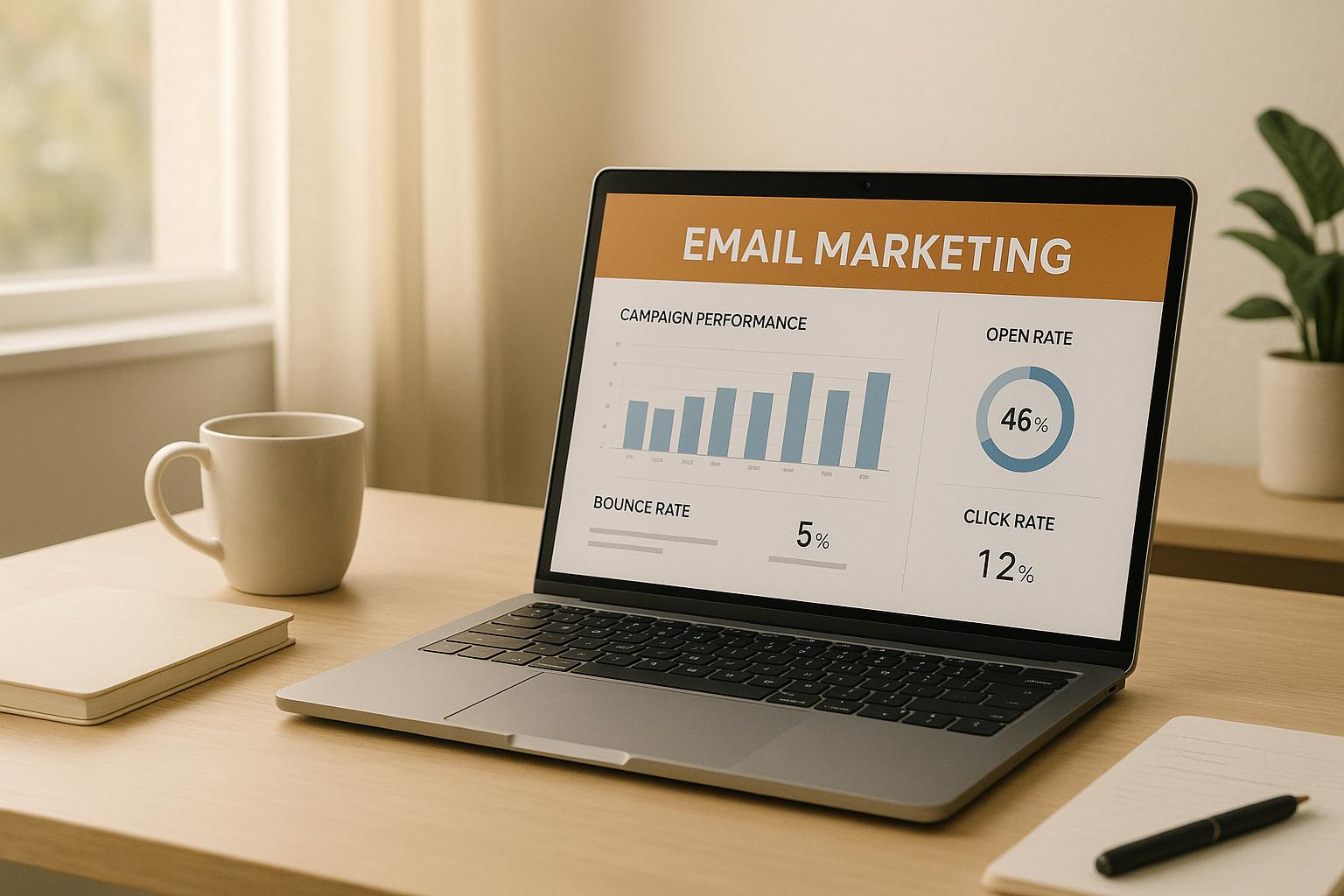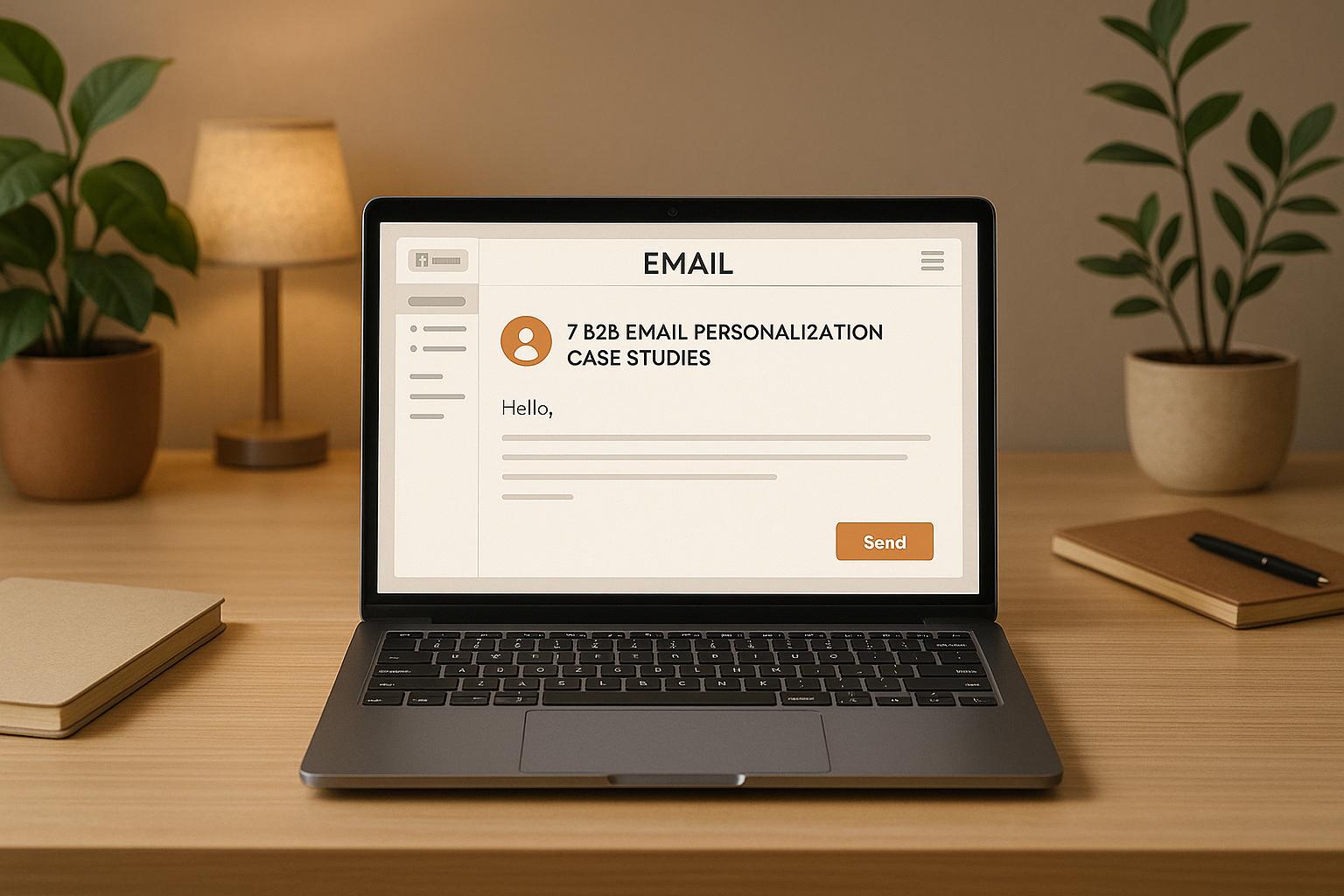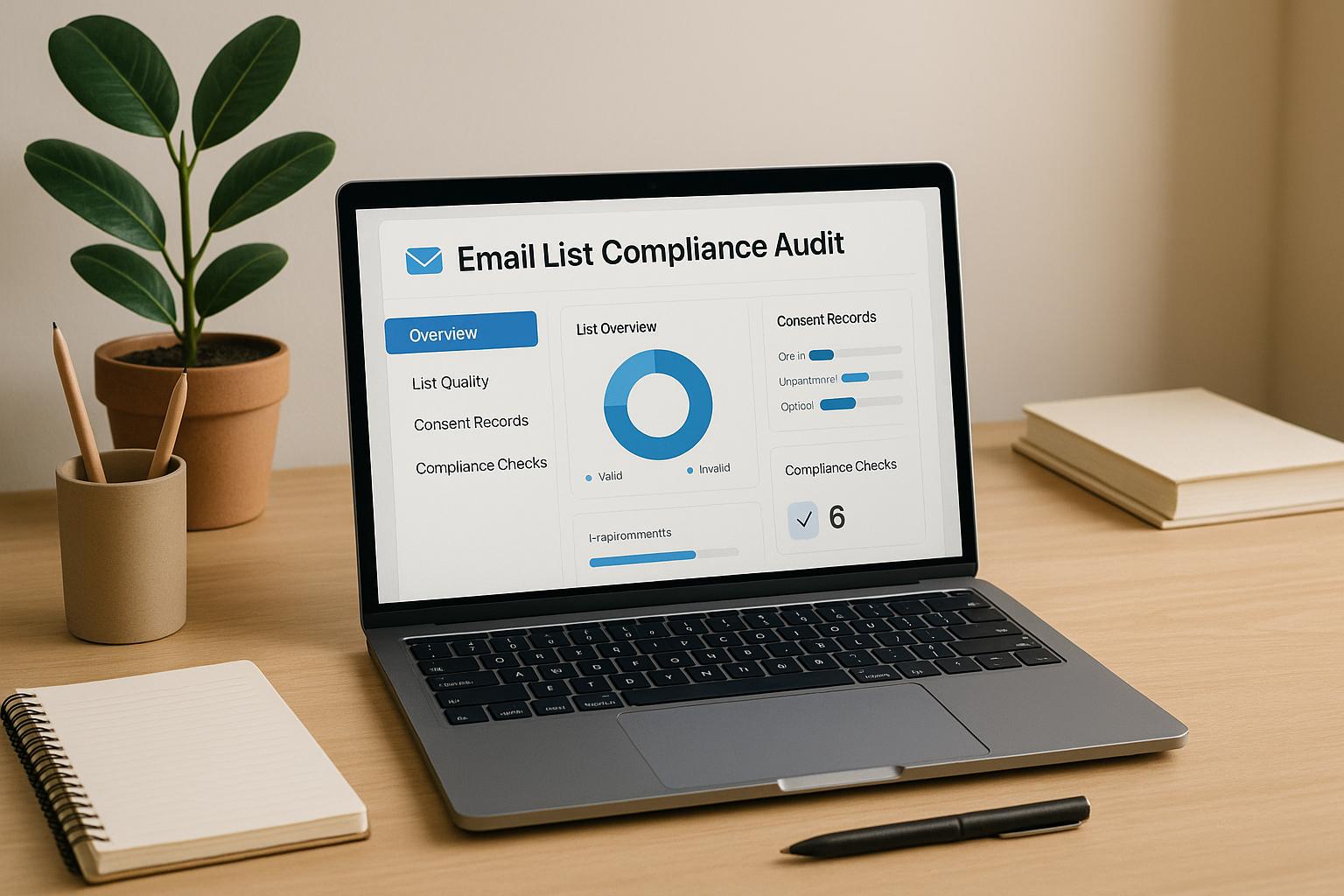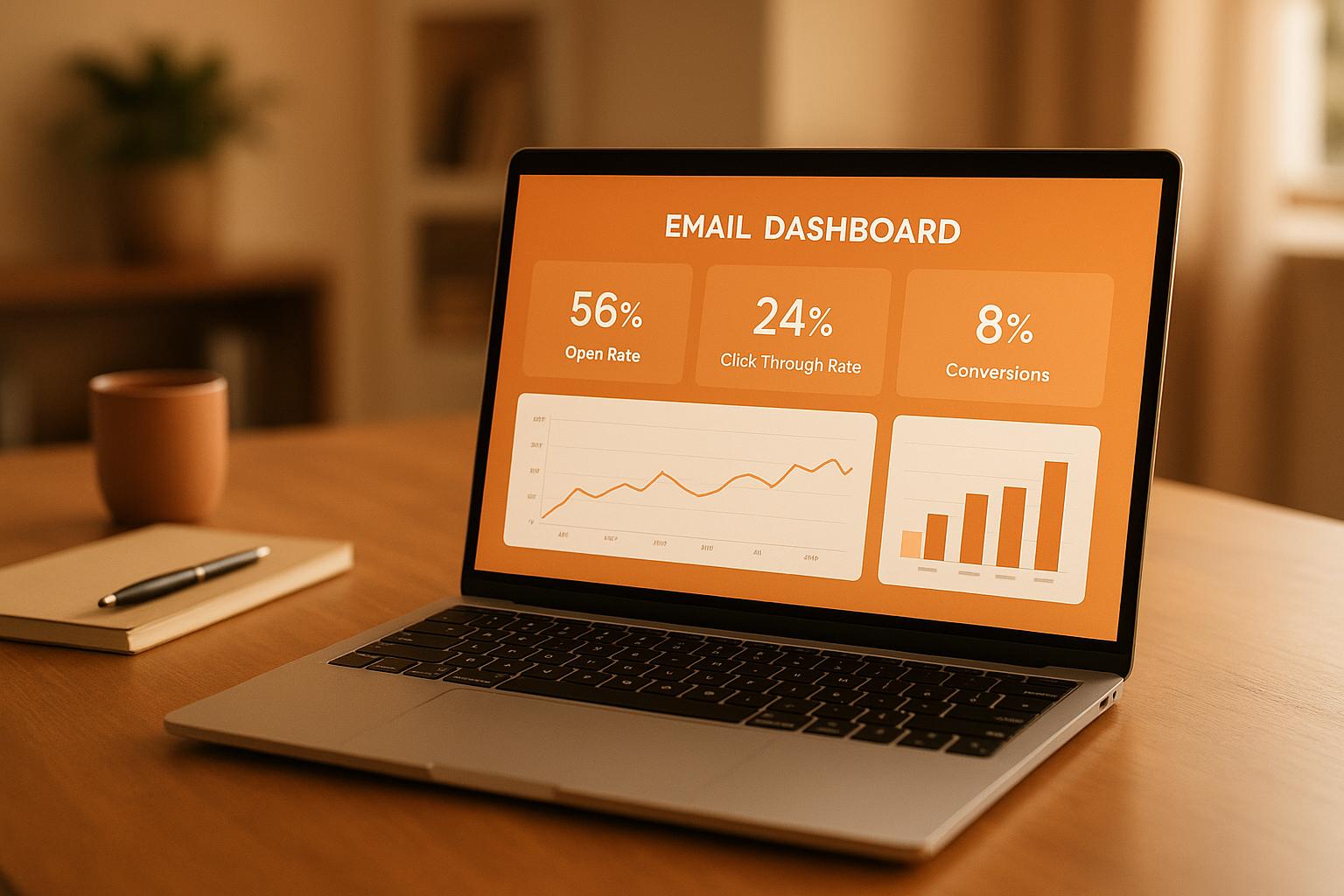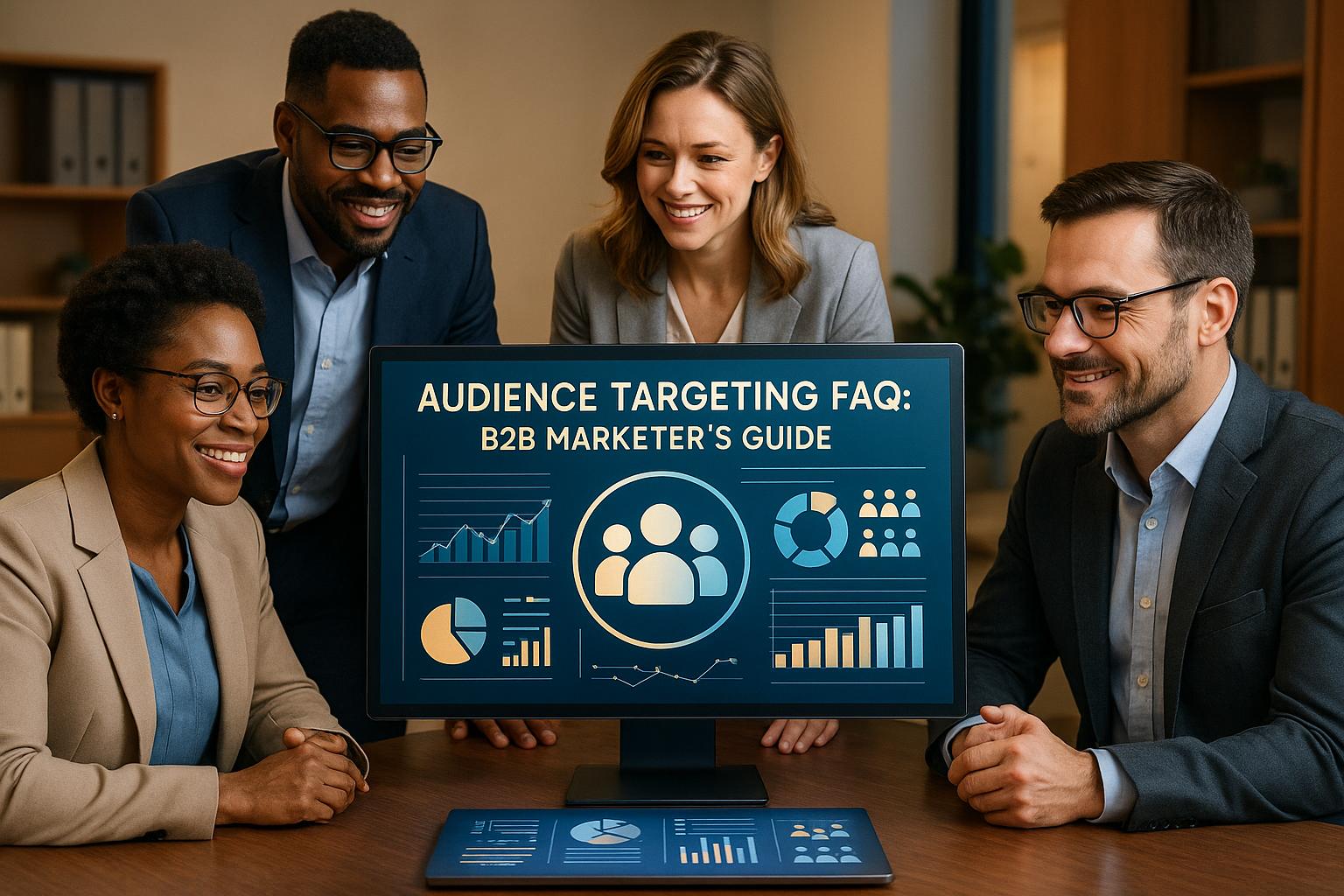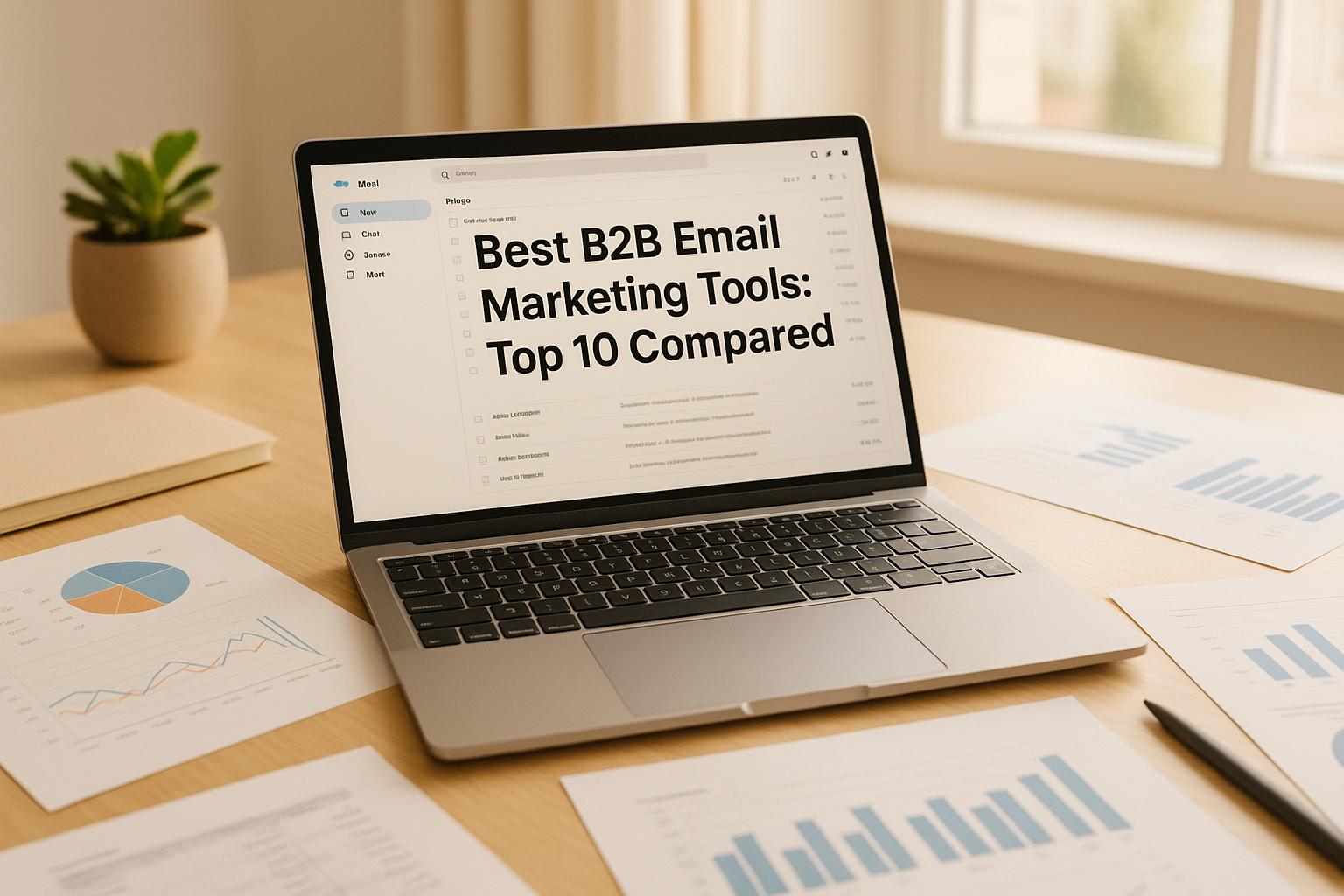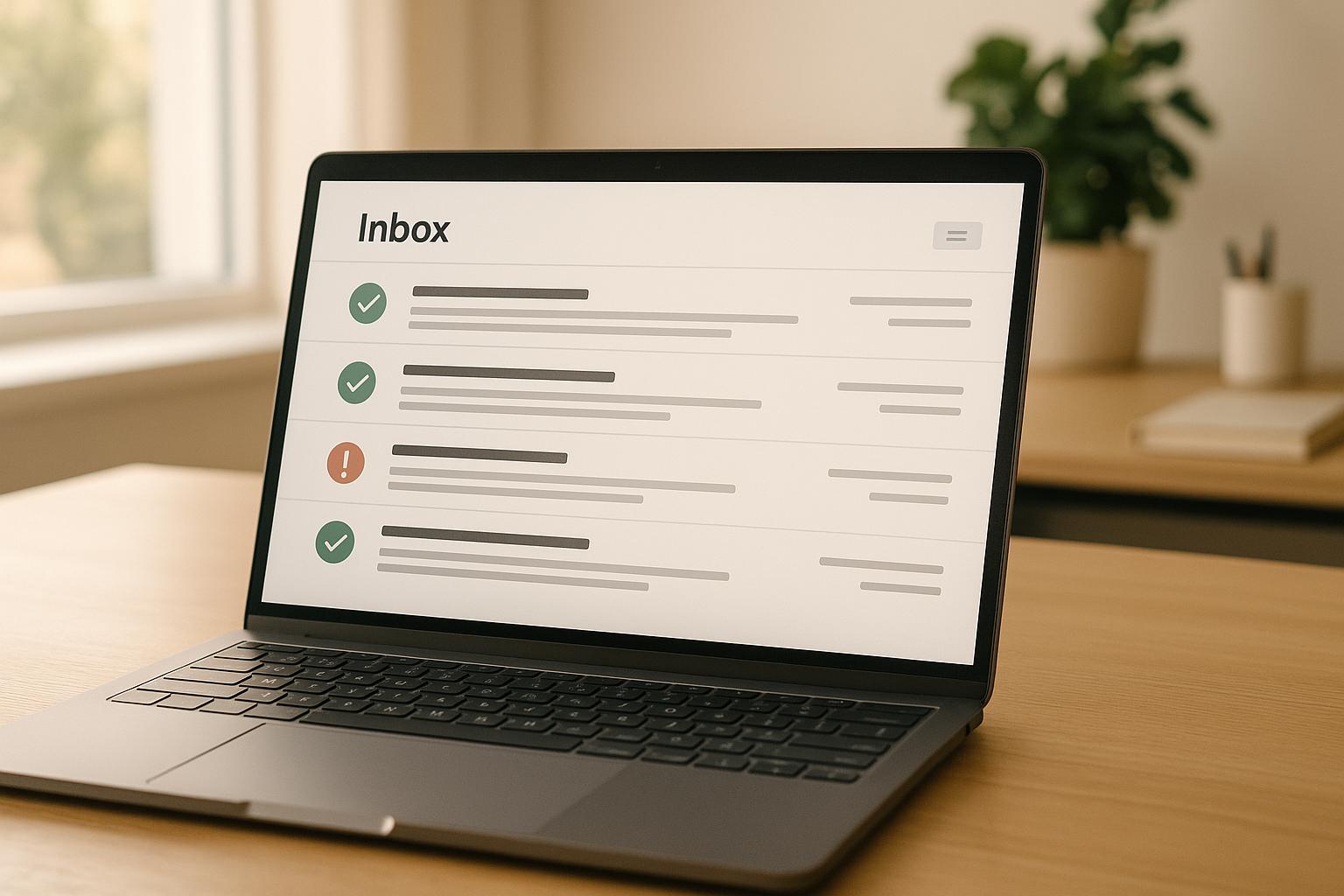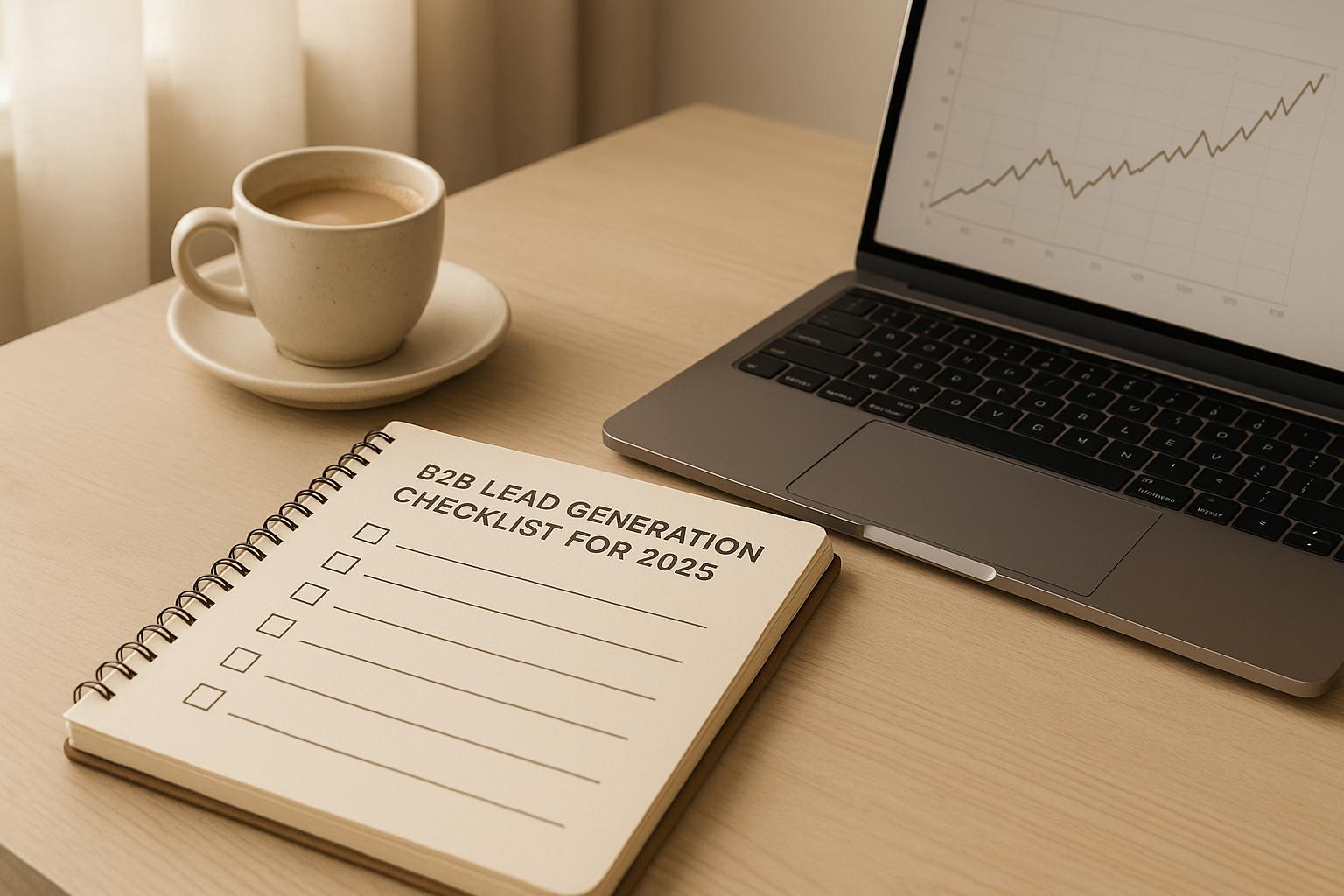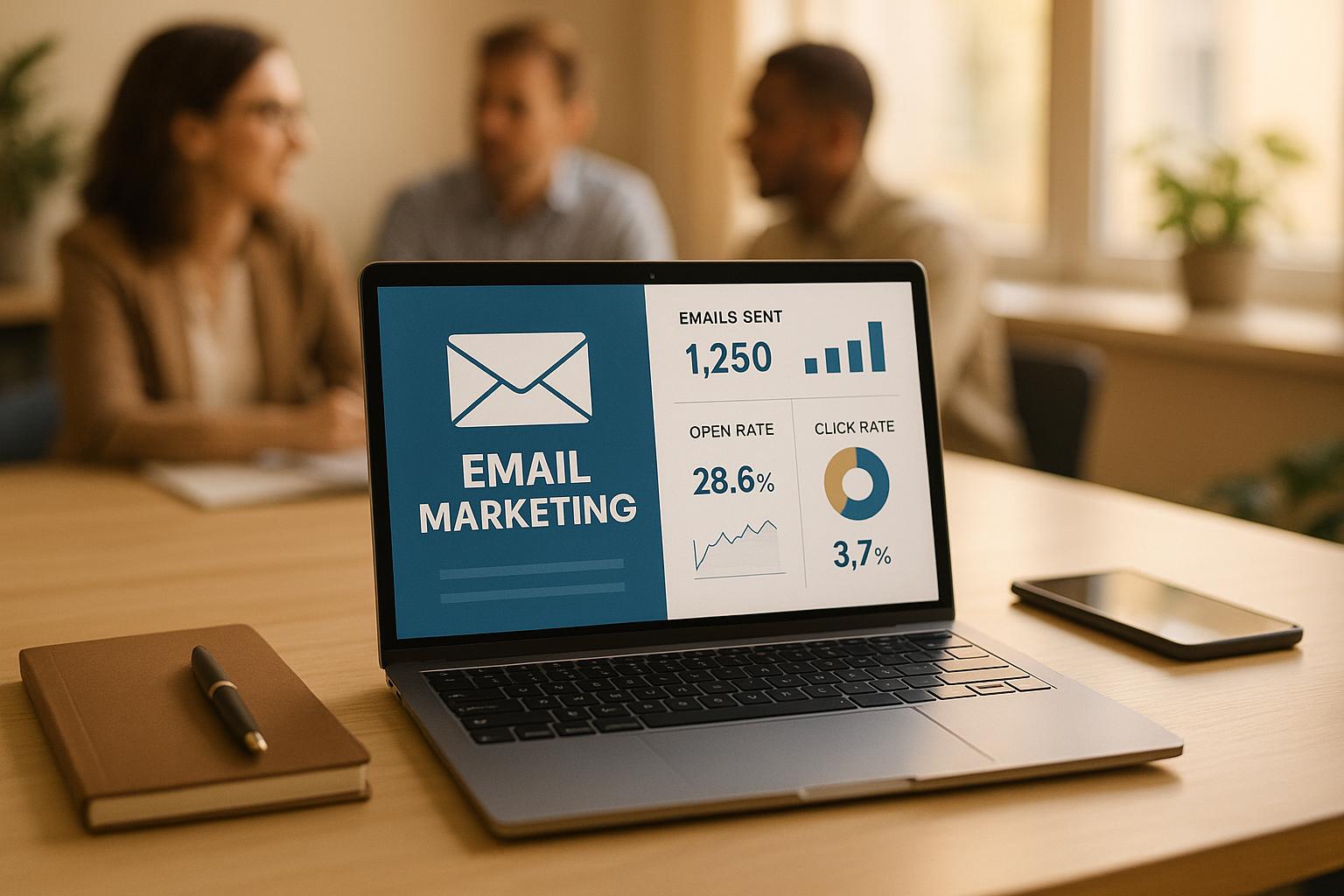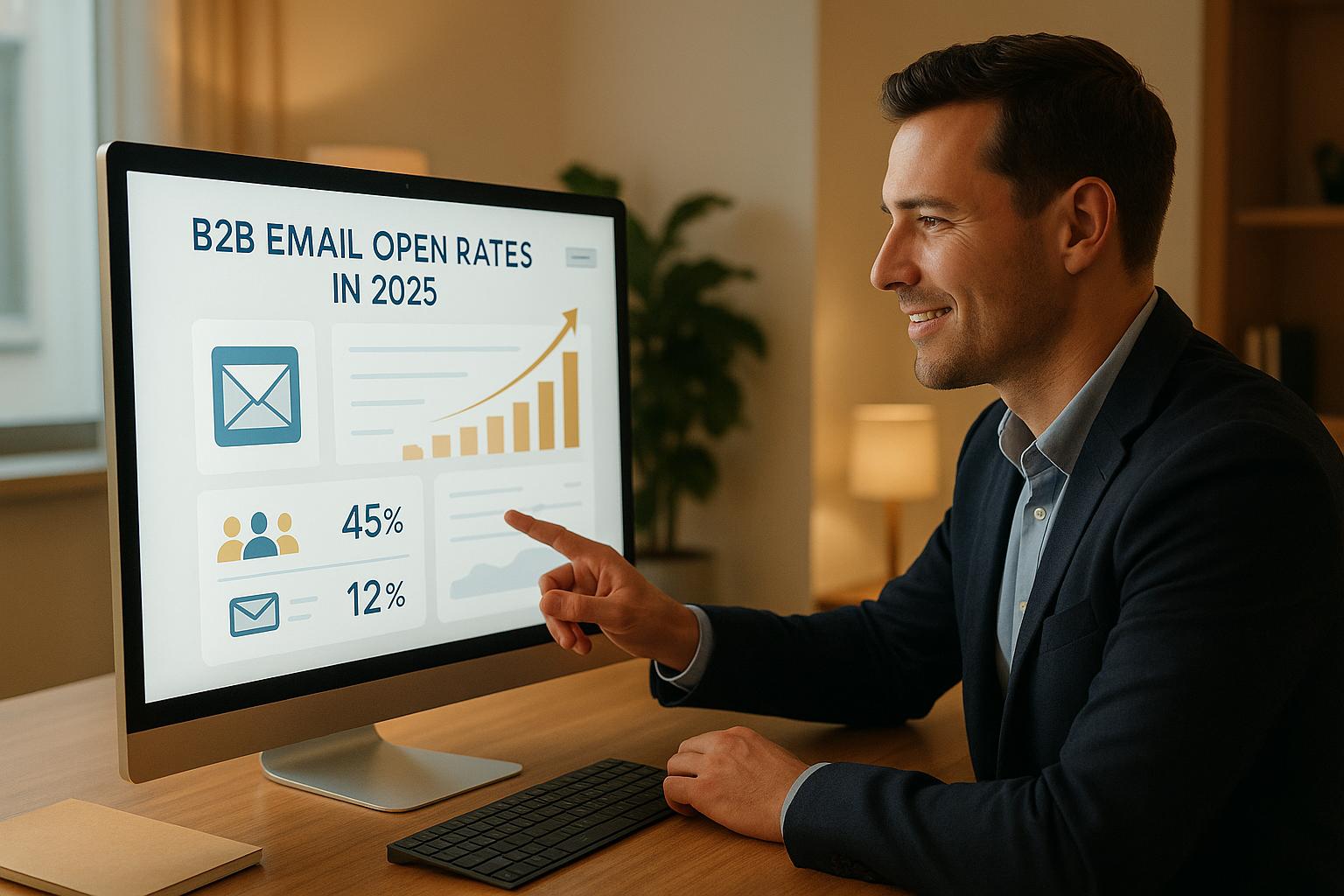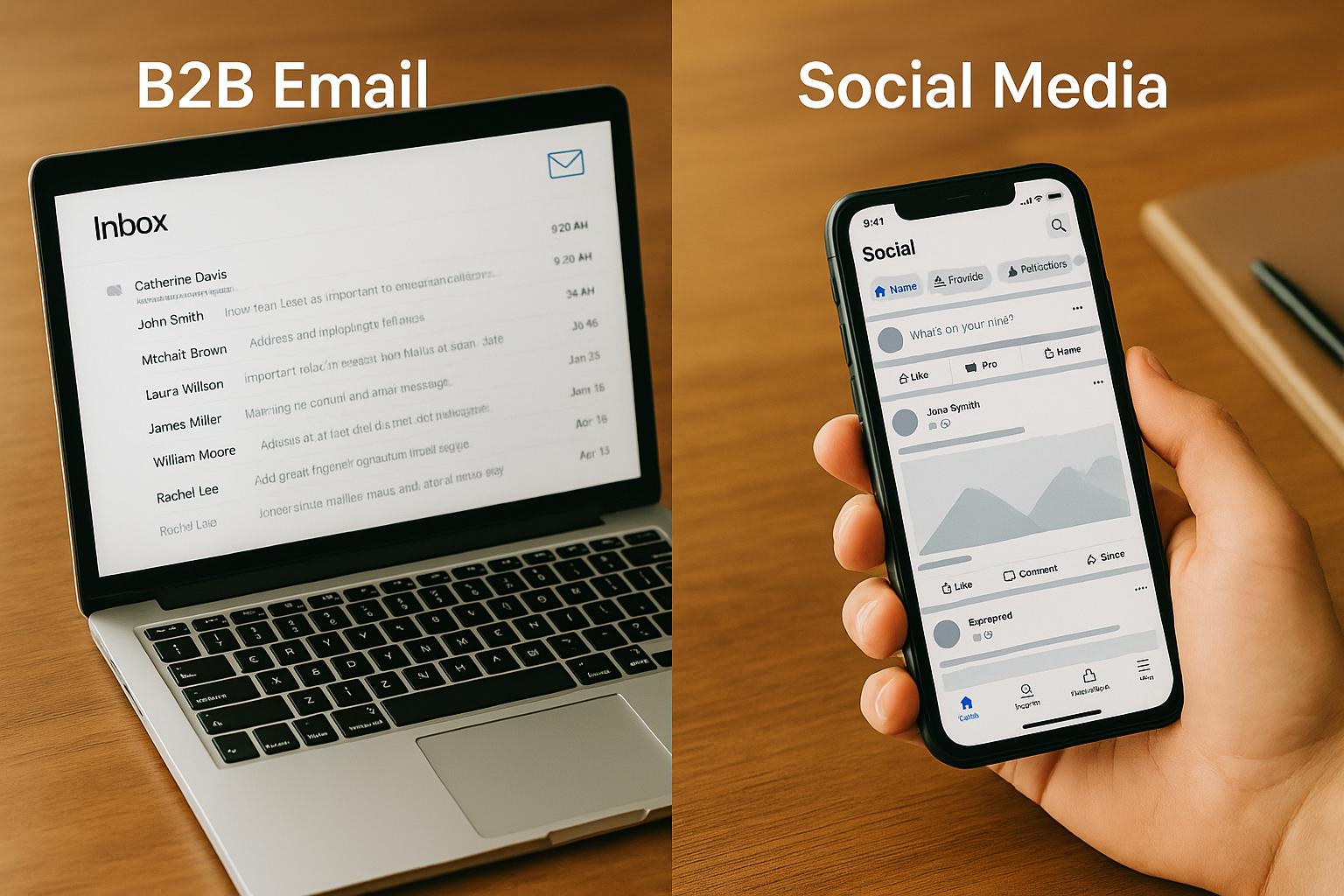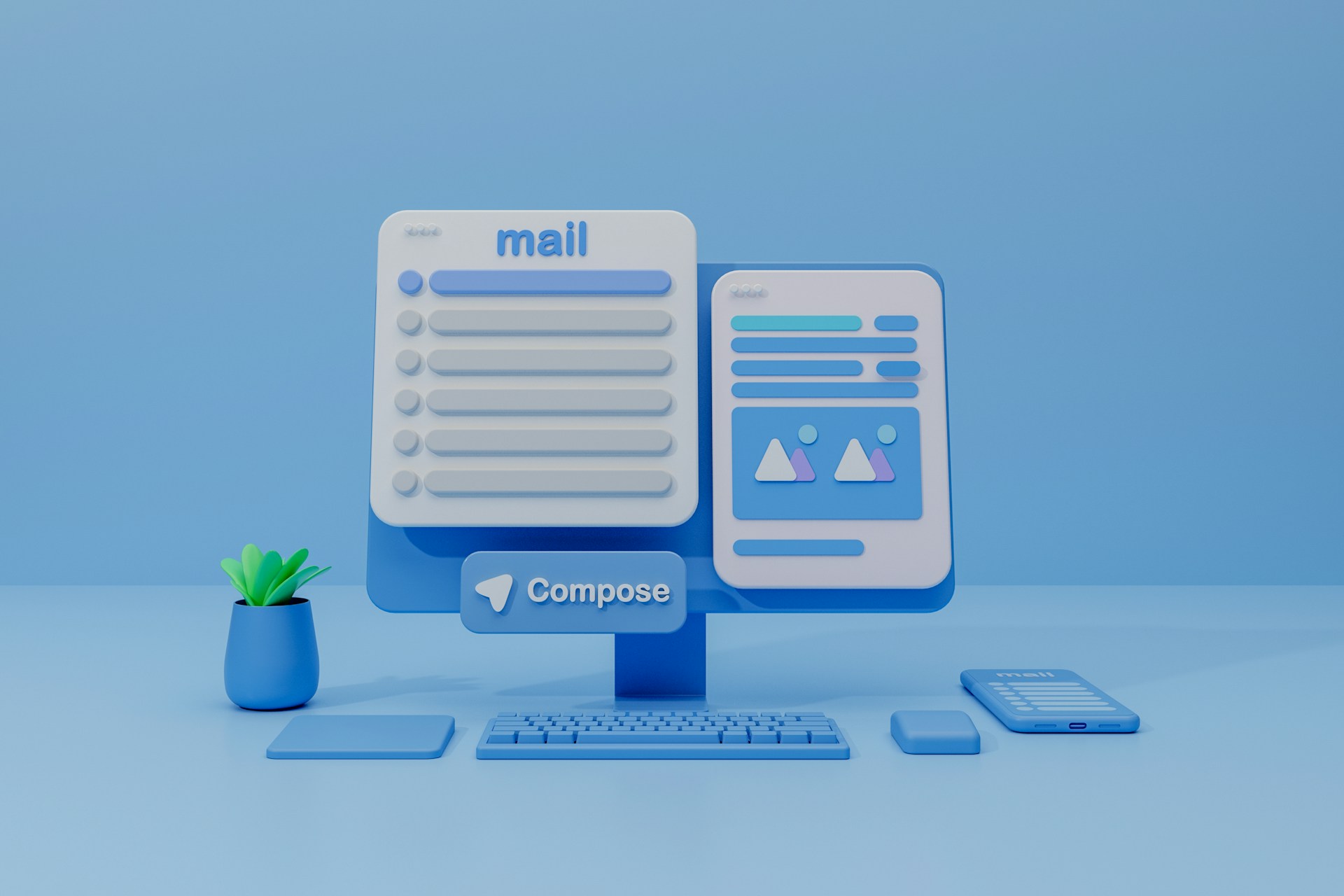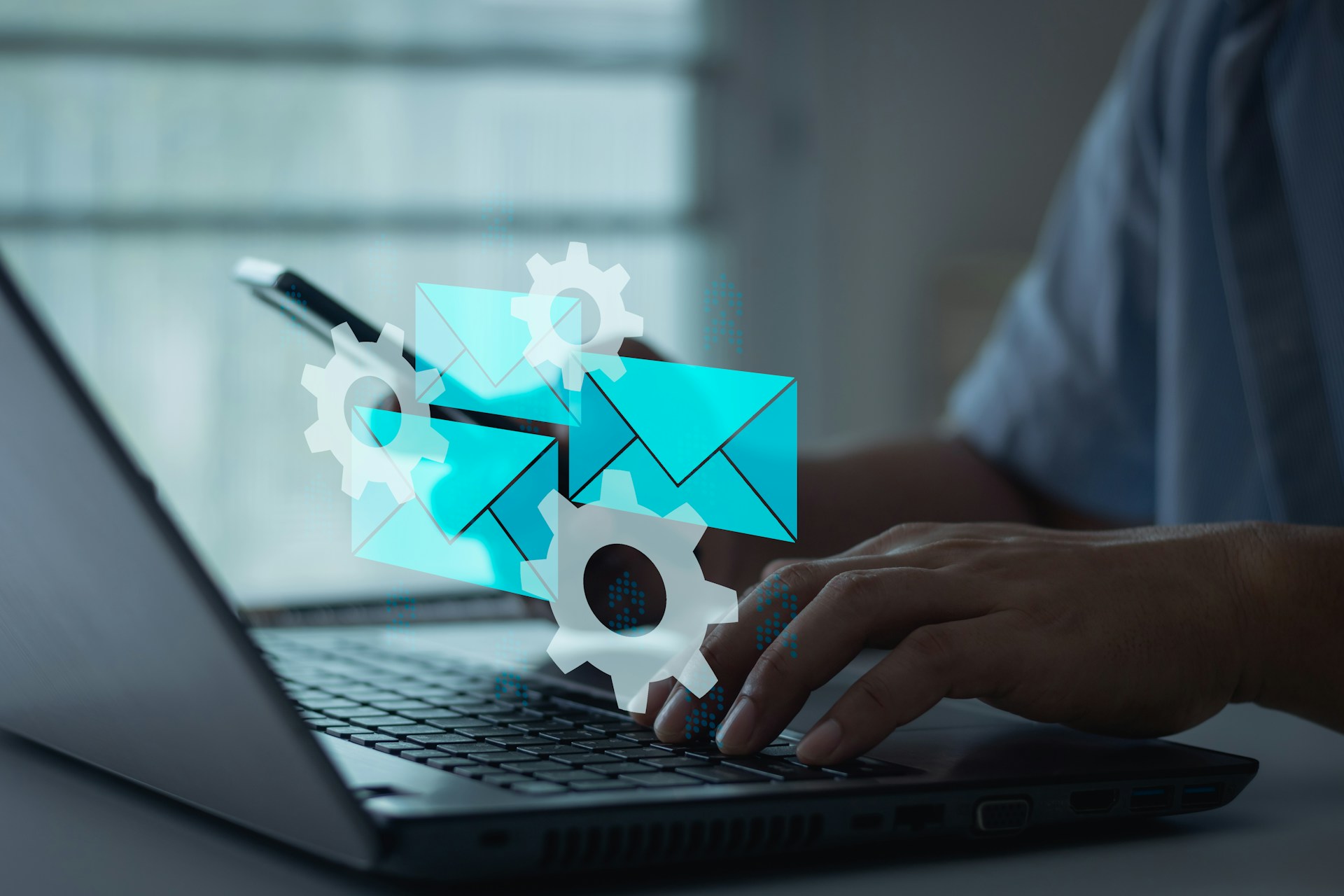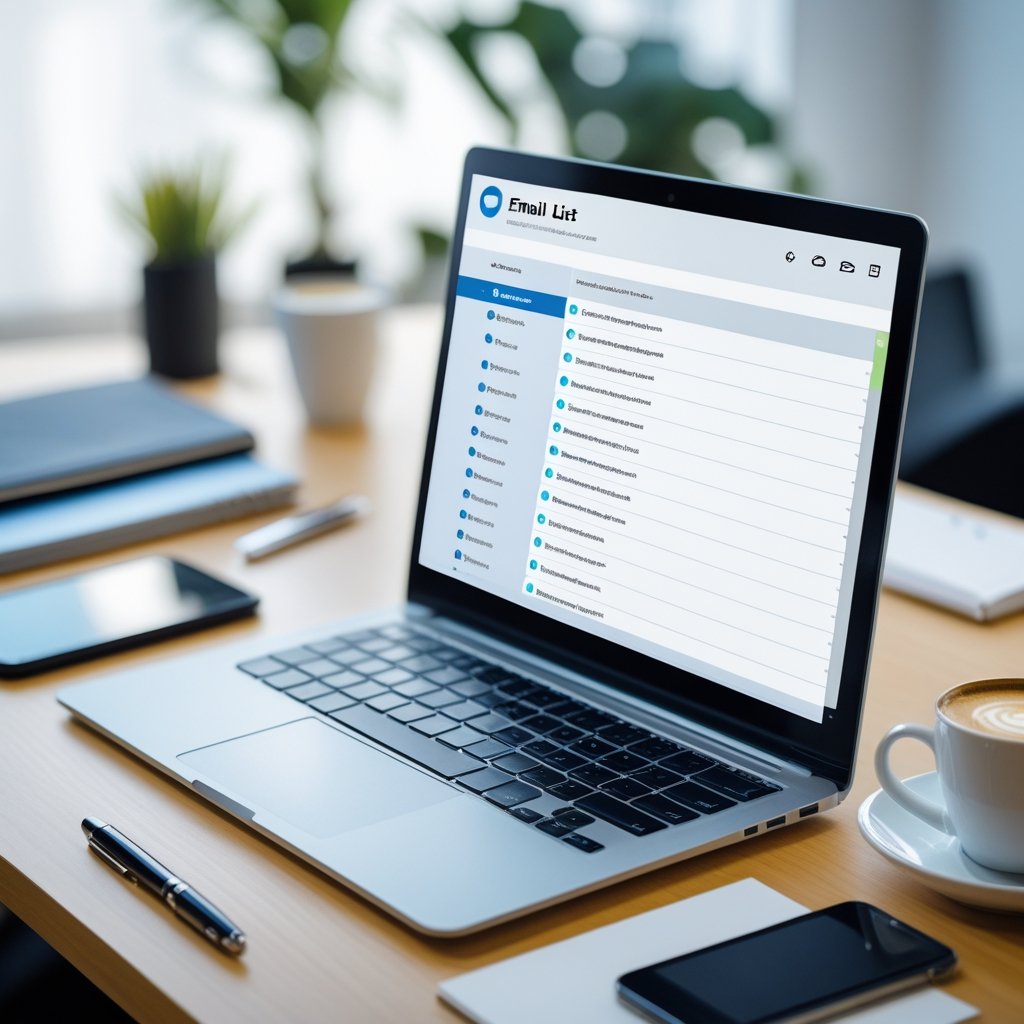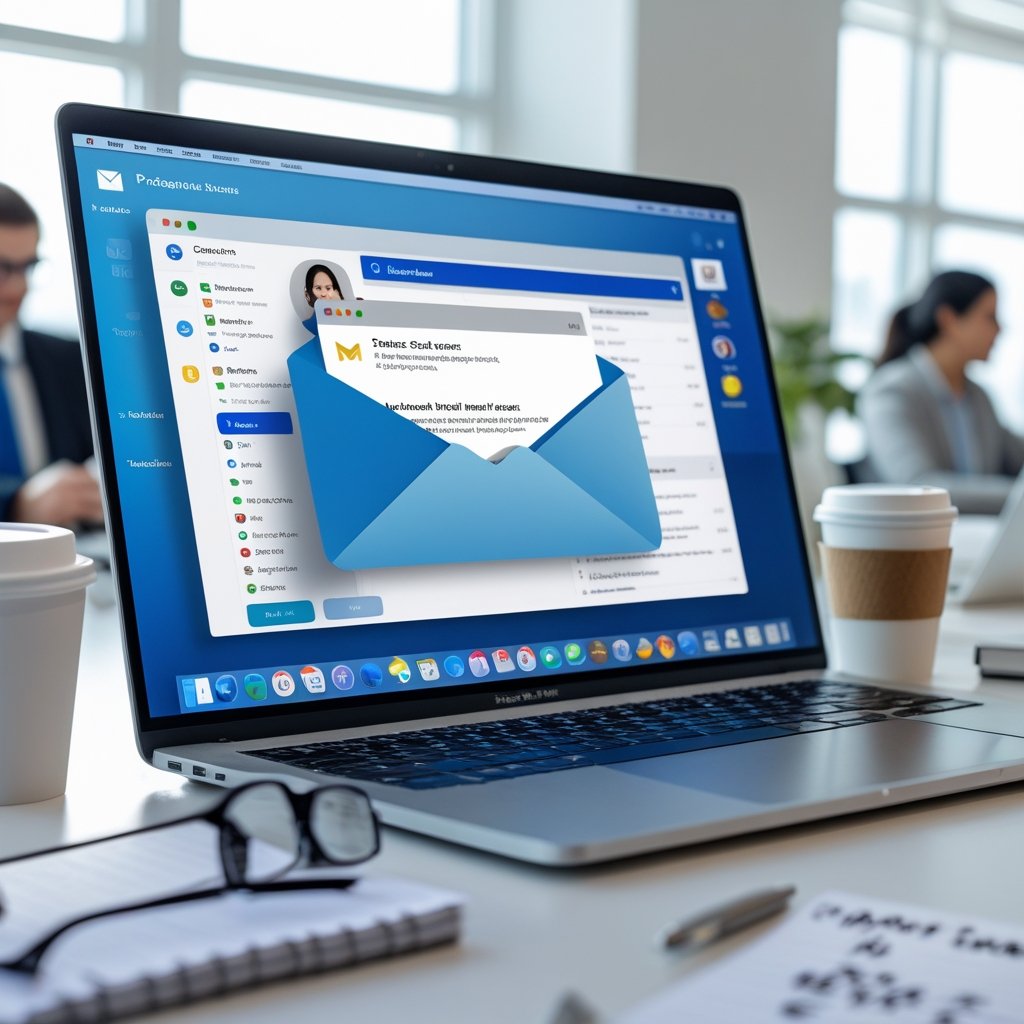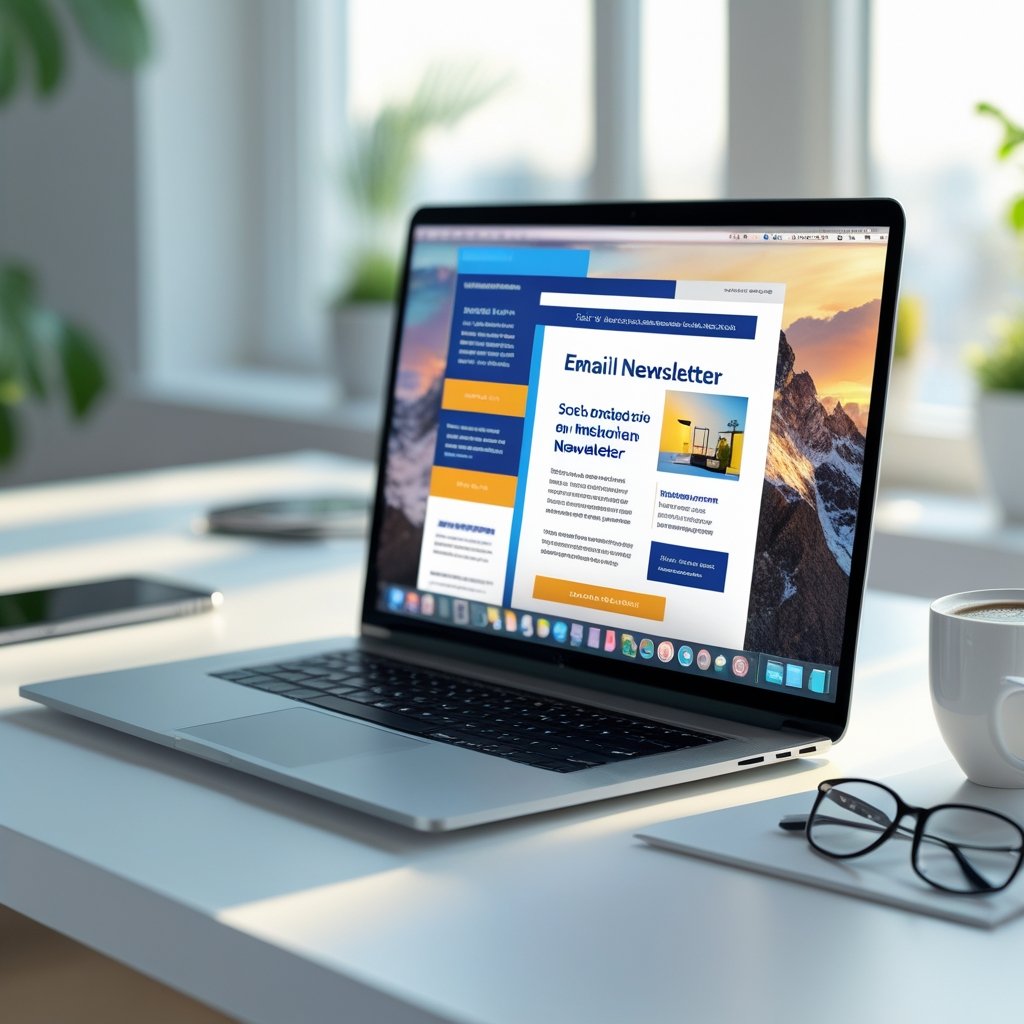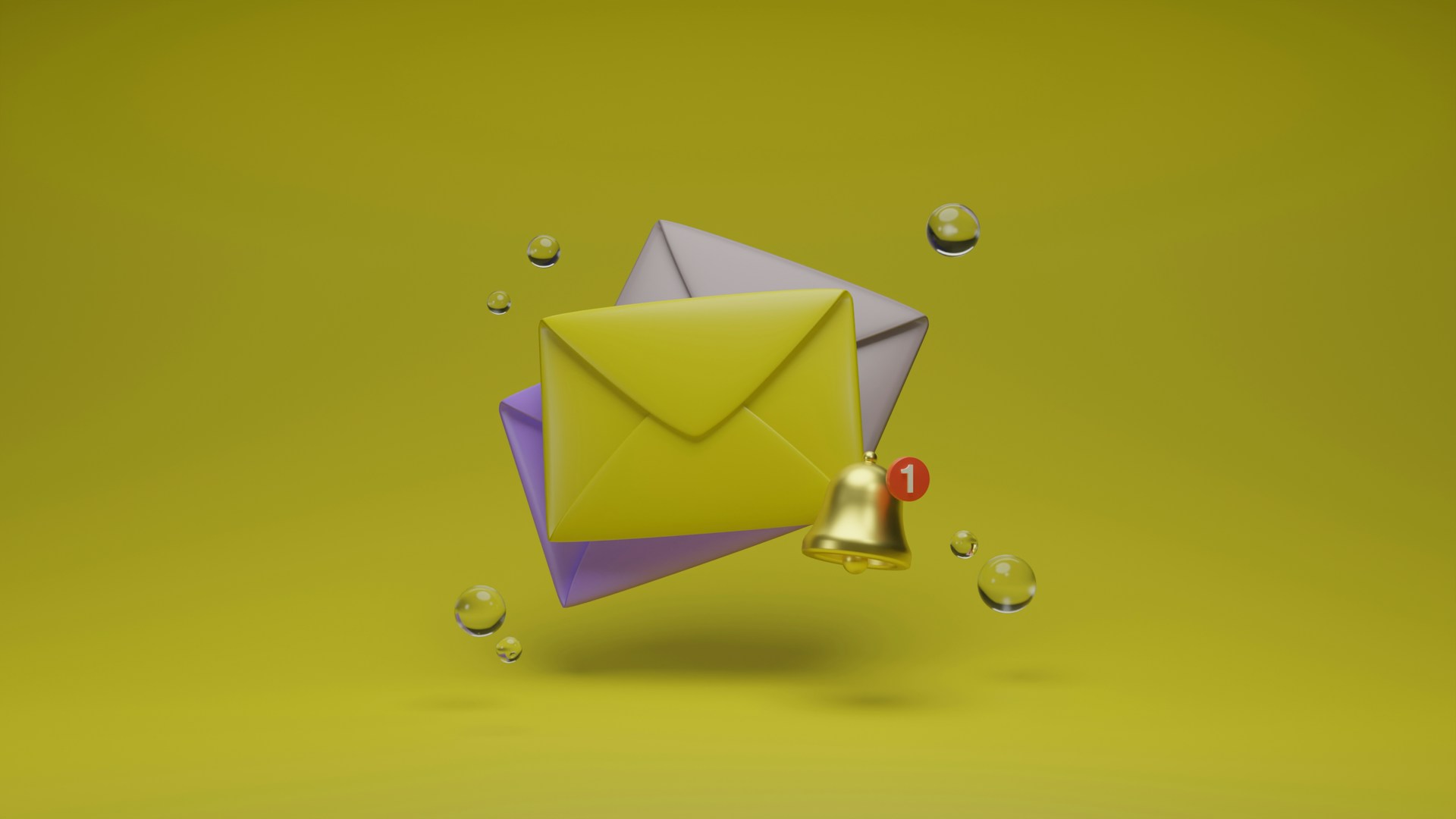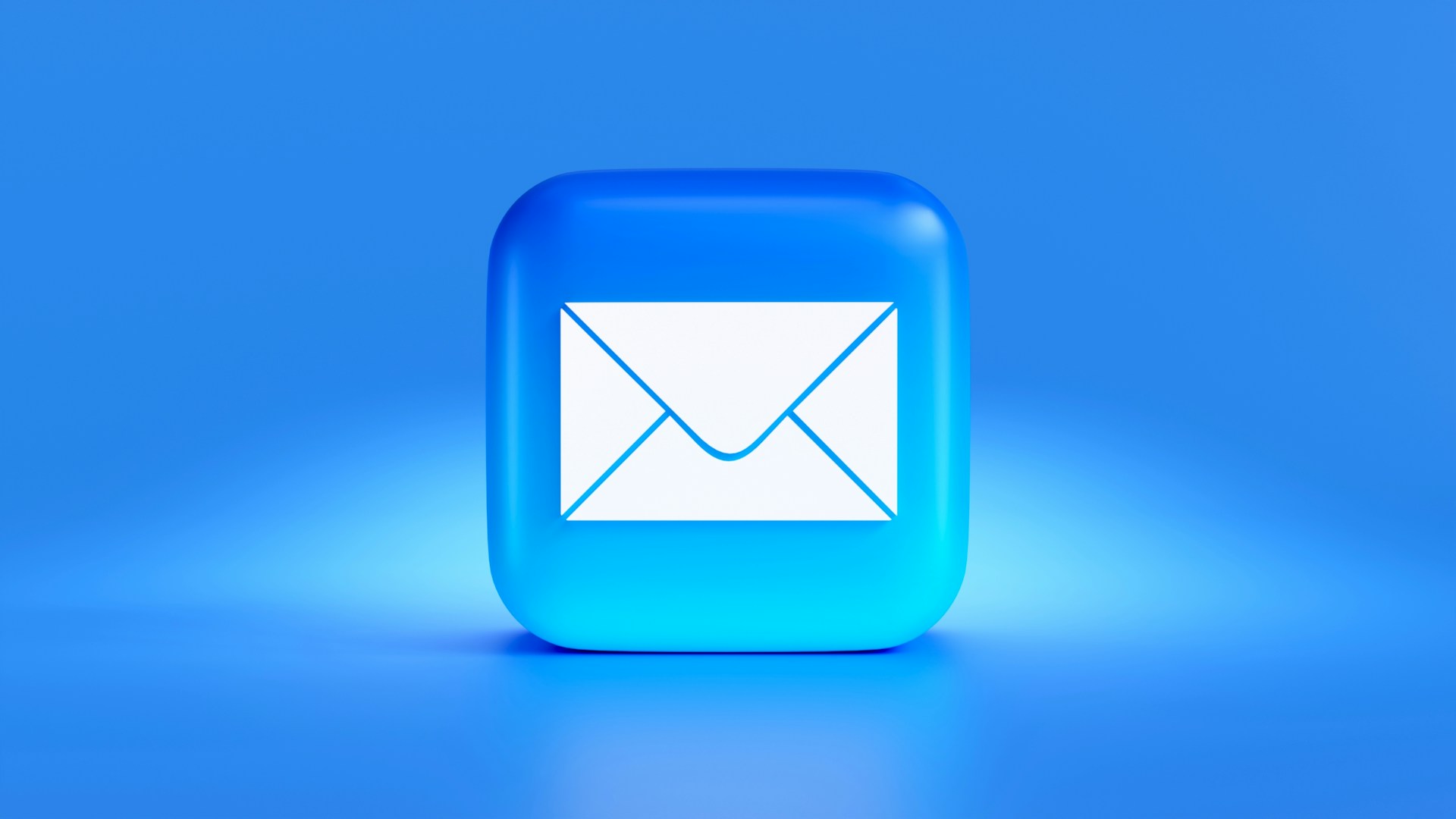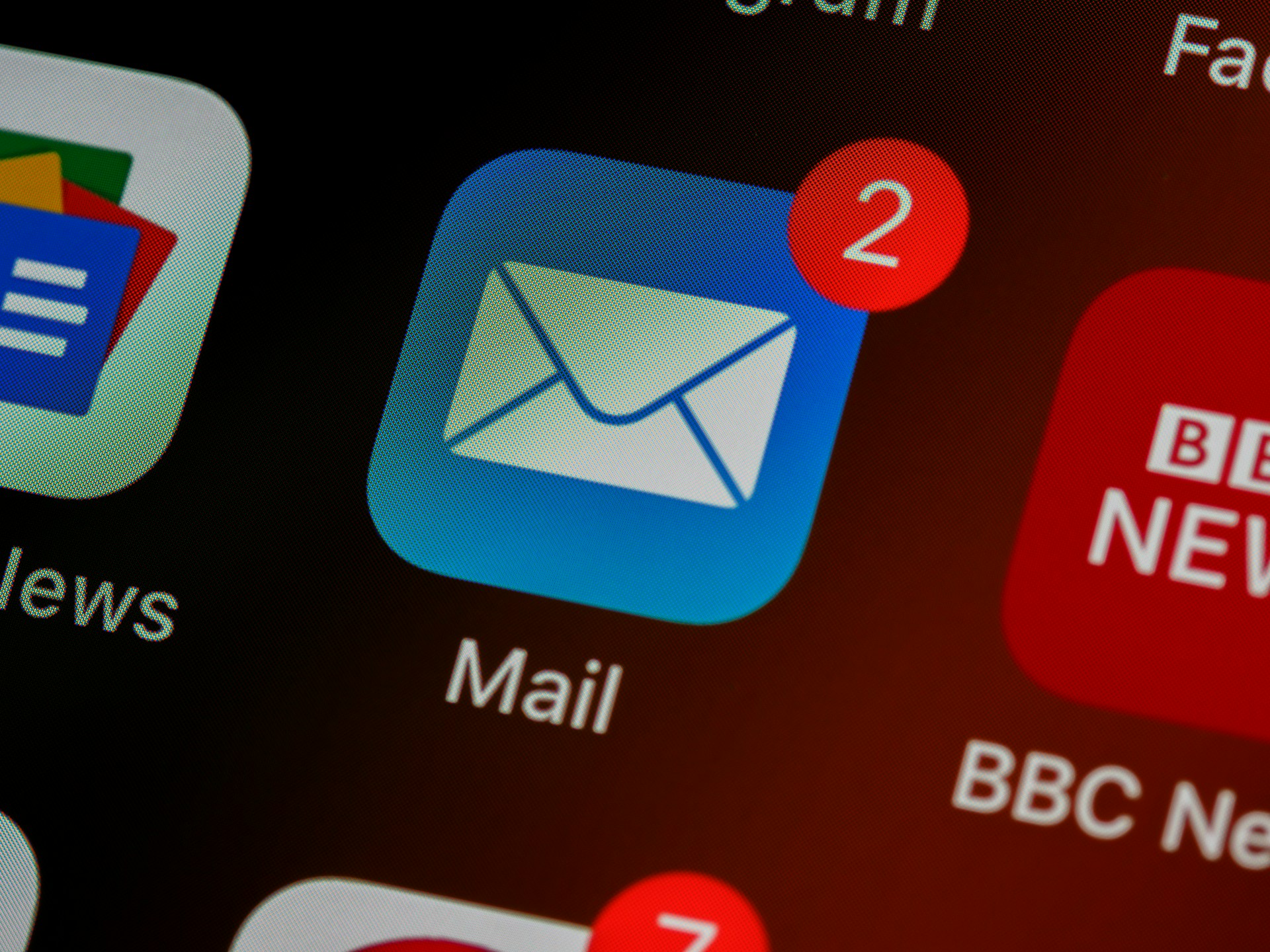Ultimate Guide to Personalization in Drip Campaigns

Personalized drip campaigns are the future of email marketing. Why? Because sending generic emails doesn't work anymore - especially for B2B buyers who expect tailored communication. Personalization helps you send the right message to the right person at the right time, leading to higher engagement and better results.
Here’s what you’ll learn:
- How personalization improves open and click-through rates.
- The role of segmentation in making personalization scalable.
- Key data types (like demographic and behavioral) that power personalization.
- Ways to use automation and behavioral triggers for timely, relevant emails.
- How to measure success using metrics like open rates, CTRs, and revenue per email.
Personalization Basics for Drip Campaigns
What Personalization Actually Means
Personalization isn’t just about throwing a recipient’s name into an email. Sure, using a first name is a start, but real personalization digs deeper - tailoring messages to align with someone’s unique challenges, goals, and needs.
For instance, consider the difference between a marketing director struggling with lead attribution and a CMO laser-focused on account-based strategies. Their priorities are worlds apart, and your messaging should reflect that. When you tap into industry-specific pain points, highlight relevant use cases, or tweak your tone to suit someone’s seniority, you’re delivering personalization that resonates.
The best drip campaigns feel like genuine, one-on-one conversations. Your audience should sense that you understand their world and are addressing their specific needs - not just blasting out a generic message to everyone on your list. This kind of thoughtful approach starts with segmentation, which sets the stage for scalable personalization.
How Segmentation Supports Personalization
Segmentation is all about grouping your audience based on shared characteristics, while personalization fine-tunes the messaging for each group.
Think of segmentation as the foundation of your personalization strategy. For example, you might divide your audience by company size, industry, or job title. Once you’ve done that, you can create tailored content for each group. Say you’re targeting HR directors at mid-sized companies (50-200 employees) - you could focus on challenges like remote work policies or employee retention within that segment.
By organizing your audience into segments, you make personalization manageable and scalable. Instead of crafting thousands of individual emails, you create targeted messages for groups with similar needs. The key is finding the right balance: avoid keeping things so broad that they feel impersonal, but don’t overcomplicate segments to the point of inefficiency.
Data Types That Power Personalization
The secret to effective personalization lies in having the right data. The more relevant information you gather, the better you can tailor your messages.
- Demographic data: Basic details like name, title, company, and location help you adjust tone and content. For instance, a CEO and a specialist at the same company will need completely different messaging.
- Firmographic data: Information about a company’s industry, size, revenue, and growth stage allows you to fine-tune your approach. A startup’s priorities won’t mirror those of a large enterprise, and your messaging should reflect that.
- Behavioral data: This tracks how prospects interact with your brand - what pages they visit, what content they download, or which emails they open and click. Behavioral insights help you gauge their interests and where they are in the buying process.
- Engagement history: Past interactions, like purchases, support tickets, or sales conversations, ensure you don’t treat existing customers like brand-new leads or repeat information they already know.
- Intent data: Signals that indicate active research, such as visits to competitor sites, keyword searches, or downloads of industry reports, can help you time your outreach and adjust the urgency of your messaging.
I Created a Fully Personalized Email Sequence in 90 Seconds using AI
Audience Segmentation: Setting Up Your Foundation
Effective segmentation is the backbone of any well-executed drip campaign. Without grouping your audience thoughtfully, even the most imaginative personalization efforts risk falling flat. The idea is simple: divide your audience into groups based on shared traits, challenges, or behaviors. By doing so, you can craft messages that truly resonate and drive engagement.
Segmentation Methods for Drip Campaigns
There are several ways to segment your audience for drip campaigns, and each method serves a specific purpose:
- Demographic segmentation: This is a cornerstone for many B2B campaigns. It involves grouping by job title, seniority, company size, industry, or location. For example, a small startup's priorities may differ significantly from those of a large corporation, requiring tailored messaging.
- Firmographic segmentation: This takes a closer look at company-level characteristics like revenue, growth stage, technology stack, or employee count. These details provide insights into how to structure your messaging to align with their business needs.
- Behavioral segmentation: This method tracks how prospects interact with your brand. Metrics like website visits, content downloads, email engagement, and event attendance can reveal intent. For instance, someone repeatedly visiting your pricing page or downloading multiple case studies likely signals stronger purchase intent compared to someone casually browsing a blog.
- Lifecycle stage segmentation: Understanding where a prospect is in their buying journey is key. Early-stage prospects often need educational content to explore their challenges. Mid-stage prospects are looking for solutions and proof of results, while late-stage prospects focus on pricing, implementation, and decision-making.
- Engagement-based segmentation: Divide your audience based on how actively they engage with your content. Highly engaged prospects can handle frequent, detailed emails, while less engaged ones may benefit from re-engagement campaigns to reignite interest.
- Intent-based segmentation: This focuses on identifying active buying signals, such as searches for specific keywords, visits to competitor websites, or technology-related purchases. These signals allow you to adjust your messaging to speak directly to prospects actively evaluating solutions.
By leveraging these methods, you can determine when separate drip sequences are necessary to address the unique needs of your audience.
When to Create Separate Drip Sequences
Knowing when to create distinct drip sequences is just as crucial as segmentation itself. Here are some scenarios where separate sequences make sense:
- Industry differences: Different industries often have unique challenges and priorities. For example, a healthcare company may require messaging around compliance and lengthy implementation timelines, while a tech startup focuses on speed and adaptability.
- Company size: Enterprises often need insights into scalability, system integration, and support for complex structures. Smaller businesses, on the other hand, care more about affordability, ease of use, and quick implementation.
- Role-based and industry-specific needs: Tailor messaging to job functions. A marketing director may prioritize lead generation, while a sales director focuses on pipeline management. Even if you're selling the same product, the value proposition must align with the specific responsibilities of each role.
- Geographic considerations: Time zones, cultural nuances, regulatory requirements, and market maturity can all influence messaging. For instance, European campaigns might emphasize GDPR compliance, while US campaigns highlight ROI and competitive differentiation.
- Product complexity: If you offer multiple solutions, each with different use cases, separate sequences ensure prospects receive relevant information. For example, someone interested in your marketing automation tools doesn’t need details about sales forecasting features.
- Buying stage differences: New prospects need educational content to understand their problem and your category, while existing customers evaluating additional products require messaging that builds on their current relationship with your brand.
The key is balance. Too few segments lead to generic, ineffective messaging. Too many can create operational headaches. Start with 3-5 core segments - often based on industry, company size, and role - and expand as your data and team capabilities grow. This approach helps you refine your messaging and processes before diving into more complex segmentation. Over time, as you gather insights and fine-tune your strategy, you can develop even more targeted sequences that yield stronger results.
Personalization Methods and Techniques
Once you've laid the groundwork with proper segmentation, it's time to bring your emails to life with personalization techniques. The goal? Turning generic messages into ones that feel tailor-made. Let’s begin with the first impression your email makes: the subject lines and greetings.
Personalizing Subject Lines and Greetings
Your subject line is your email's gateway. It’s the first thing readers see, and it plays a huge role in whether they open your message. In fact, emails with personalized subject lines are 26% more likely to be opened. But personalization isn’t just about slapping a first name into the subject line - it’s about creating relevance.
The best subject lines go beyond basics like, "Hi [First Name], Check Out Our New Feature." Instead, they connect to the recipient’s interests or needs. For example: "Sarah, streamline your marketing team’s workflow with automated reporting." This approach not only uses their name but also speaks directly to something meaningful to them.
Short and sweet wins the day. Aim for subject lines between 6–10 words to maximize open rates. Why? Because 41% of emails are opened on mobile devices, where brevity is key.
When it comes to greetings, personalization should feel natural and fit the context. Your email platform’s personalization tags, like [first name, fallback=] or [fullname, fallback=], can automatically insert recipient-specific details. For example, an early-morning email might open with "Good morning, Jennifer", while a later message could say, "Hope your week is going well, Jennifer."
Finally, don’t just guess what works - test it. Regular A/B testing can help you identify which personalization strategies resonate most with your audience.
Behavioral Triggers and Automation
Personalized drip campaigns shine when your emails respond directly to subscriber actions. Instead of sending the same message to everyone, behavioral triggers allow you to deliver timely and relevant content. This approach transforms email marketing from a one-size-fits-all broadcast into a responsive system that feels tailored to individual needs. Let’s dive into how triggers and automation elevate your email strategy.
Setting Up Trigger-Based Emails
Trigger-based emails are designed to react to specific actions - or inactions - taken by your subscribers. These triggers ensure your messages are timely and contextually relevant.
- Website activity triggers: Imagine someone visiting your pricing page but leaving without signing up. That’s a strong indicator they’re interested but need more convincing. You could automatically send them a case study or testimonial within 24 hours to address their concerns.
- Engagement-based triggers: If a subscriber opens three emails in a row but doesn’t click on anything, it’s a sign they might need different content. This could trigger a survey email asking what type of information they’re looking for.
- Time-based triggers: Timing matters. For example, if someone abandons their shopping cart, waiting 2-4 hours before sending a follow-up email can re-engage them without coming across as pushy.
- Purchase behavior triggers: These go beyond just thanking someone for a purchase. If a customer buys a basic plan, you can automatically start a sequence highlighting advanced features that encourage an upgrade.
You can also use triggers to identify high-potential leads. For instance, prospects who visit your blog multiple times in a week and open your newsletters could receive targeted invitations to webinars or early access to premium content.
Using Automation to Scale Personalization
Once you’ve set up effective triggers, automation takes personalization to the next level by making it scalable. While manual personalization can work in small doses, automation is the key to delivering customized experiences at scale.
- Dynamic content automation: With this approach, a single email template adapts based on subscriber data. For example, a marketing manager might see marketing tips, while a sales director gets sales-focused insights - all from the same campaign.
- Progressive profiling: This technique gathers more detailed subscriber information over time. One email might ask about company size, another about key challenges, and a third about budget range. Each response refines your ability to send highly personalized content in the future.
- Cross-channel automation: Personalization doesn’t have to stop at email. For example, if someone clicks a link in your email, you can ensure they see related content when they visit your website. Or, you could trigger a LinkedIn message from your sales team, creating a seamless experience across platforms.
Platforms like Breaker make these advanced automation strategies accessible, even for smaller teams. With built-in tools for behavioral tracking and lead generation, you can create complex trigger sequences without needing a technical expert. Real-time analytics also make it easy to see what’s working, allowing you to adjust your campaigns as needed.
Fine-Tuning Your Automation Strategy
Start small with your automation rules and build complexity over time. Begin with simple triggers, such as email opens or link clicks, and layer on more advanced behaviors as you collect data.
Regular optimization is essential for success. Schedule monthly reviews to evaluate your trigger performance. Which emails are driving the most engagement? Are any triggers firing too frequently or not often enough? Use these insights to fine-tune your automation rules and improve your campaigns.
sbb-itb-8889418
Measuring Personalization Results
Personalized drip campaigns need to show measurable outcomes. Without proper tracking, it's impossible to know if your efforts are actually driving results. The key lies in monitoring the right metrics and consistently testing to understand what truly connects with your audience.
Key Metrics for Personalization Success
Open rates are a great starting point to measure how well personalization works. Emails with personalized subject lines typically outperform generic ones. Compare the open rates of your personalized campaigns with standard broadcasts to see if your approach is making a difference.
Click-through rates (CTR) tell you if your audience is engaging with your content after opening the email. This metric reveals how much your message resonates. Ideally, personalized emails should see higher CTRs compared to their non-personalized counterparts.
Conversion rates are the ultimate measure of success. Whether you're tracking newsletter signups, demo requests, or purchases, personalized campaigns should lead to better results than generic emails. Take a holistic view and track conversions throughout the entire customer journey - not just at the email level.
Revenue per email provides a direct financial lens for evaluating personalization. Calculate this by dividing the total revenue generated by the number of emails sent. This metric can help you determine if the effort you’re putting into personalization is paying off in dollars and cents.
List growth and retention are long-term indicators of success. Delivering relevant, personalized content keeps subscribers engaged and reduces churn. Pay attention to your monthly unsubscribe rates and compare how different audience segments respond over time.
Engagement scoring helps identify your most valuable subscribers. Assign points for actions like opens, clicks, and downloads to see how personalization influences engagement over time. This data is crucial for shaping long-term strategies.
Once you’ve analyzed these metrics, use the insights to refine your campaigns further through targeted A/B testing.
A/B Testing Personalization Elements
Subject line testing is one of the easiest ways to optimize personalization. Experiment with variations that include first names, company names, or industry-specific terms. For instance, compare "Hi [First Name], your marketing strategy needs this" to "Hi [First Name], your [Industry] strategy needs this." Testing one element at a time helps you figure out what resonates most.
Content block testing allows you to tweak the main body of your emails. Create different versions of key sections tailored to specific segments. For example, test whether case studies perform better than product demos for your audience. Let these tests run long enough to capture typical engagement patterns.
Call-to-action (CTA) personalization can make a big difference in conversion rates. Compare personalized CTAs like "Get My Marketing Plan" against generic ones like "Learn More." You can also experiment with placement, color, and wording to see what works best for different groups, such as executives versus technical professionals.
Send time optimization adds another layer of personalization. Different segments may respond better at different times - executives might prefer early morning emails, while creative professionals could be more engaged in the afternoon. Use analytics to identify when your audience is most active and test accordingly.
Dynamic content testing focuses on which personalized elements drive the most engagement. Try variations in greetings, industry-specific content, or role-based messaging. Start simple, like comparing high-level personalization with more detailed customization, and build from there.
Platforms like Breaker simplify A/B testing with built-in analytics and automated test management. You can test multiple variants and let the platform automatically send the best-performing version to the rest of your list, saving time while maximizing results.
Finally, don’t rush to judgment. Statistical significance is key. Let your tests run long enough and ensure you have a meaningful sample size before making decisions. Document your findings to continuously improve future campaigns.
Advanced Personalization Methods
Personalization in marketing has come a long way. Today, it’s not just about adding a name to an email or segmenting by age group. Marketers now have tools to deliver highly targeted content across multiple platforms, creating experiences that feel tailored to each individual. Let’s dive into how predictive personalization and cross-channel strategies are reshaping the way we engage with audiences.
Using Predictive Personalization
Predictive personalization uses AI to analyze past behaviors and predict future preferences. This approach helps marketers fine-tune their content delivery, making it more relevant and timely.
Here’s how it works:
- Behavioral Prediction Models and Recommendations: Think of how streaming platforms suggest shows based on your viewing history. Marketing systems do something similar. For example, if a user frequently downloads whitepapers about customer retention, the system might prioritize sending similar content to others with matching profiles.
- Purchase Intent Scoring: By tracking actions like email opens, link clicks, or time spent on pricing pages, AI assigns a "readiness" score to each subscriber. This score helps marketers know when to send more sales-focused content to those most likely to make a purchase.
- Dynamic Send Time Optimization: Forget sending emails at the same time for everyone. Machine learning identifies when each subscriber is most likely to engage - whether it’s 7:00 AM for one person or 2:00 PM for another - and schedules emails accordingly.
- Predictive Churn Modeling: AI can flag subscribers who might disengage by spotting patterns like fewer email opens or reduced clicks. Once identified, these users can receive re-engagement campaigns designed to win them back.
Platforms like Breaker take this to the next level by using real-time analytics to refine strategies. Breaker’s tools analyze subscriber behavior, helping marketers optimize send times and content without the guesswork. It’s a streamlined way to keep campaigns relevant and effective.
Personalization Across Multiple Channels
Predictive insights don’t stop at email - they can power personalization across a variety of channels, creating a seamless and consistent experience for users. Here’s how:
- Social Media Retargeting: Platforms like LinkedIn and Facebook allow marketers to create custom audiences based on email activity. For instance, if someone interacts with pricing details in an email, they might later see targeted ads featuring special offers or customer testimonials.
- Progressive Profiling: Every interaction - whether it’s clicking an email link, filling out a form, or engaging on social media - adds a new layer to a subscriber’s profile. Over time, this builds a more detailed picture, enabling even more personalized outreach.
- Unified Messaging Consistency: Personalization only works if it’s cohesive. If a subscriber is exploring advanced product features in an email, showing them beginner-focused ads elsewhere could create confusion. Consistent messaging across channels ensures a smooth and logical user experience.
- Cross-Device Tracking: Subscribers often switch between devices, and cross-device tracking connects these interactions. This unified view of their journey allows marketers to deliver more accurate and relevant content.
Automation ties all these efforts together, extending personalization from email to social media, websites, and beyond. For example, if a user clicks on a specific product in an email, a coordinated campaign might automatically launch across other platforms to reinforce the message.
However, none of this works without strong data integration and proper tracking. These elements are essential for ensuring that every touchpoint contributes to a cohesive and engaging experience - something today’s audiences expect.
Building Your Personalization Strategy
Developing a personalization strategy that grows alongside your business requires thoughtful planning. By assessing where you stand, defining where you want to go, and aligning each step with your business objectives, you can create a roadmap for success. The companies that excel in personalization don’t dive in blindly - they build carefully, test regularly, and scale intelligently.
Auditing Your Current Capabilities
Before diving deeper into personalization, take a close look at your current setup. Conducting a detailed audit will help you identify gaps, recognize strengths, and lay a strong foundation for your strategy.
Start with your data collection and storage. What kind of information are you gathering about your subscribers? Go beyond basic demographics. Are you tracking email engagement, website activity, download preferences, or content consumption? Look for untapped data sources that could enrich your personalization efforts.
Next, review your segmentation practices. Are your audience groups truly distinct, or are they too broad to make a real impact? Effective segmentation reflects meaningful differences that influence how people interact with your content, so ensure your categories are specific enough to drive results.
Take a hard look at your technology stack. Is your email platform integrated with your CRM? Can your website activity feed into your email campaigns? Seamless integration is essential for scaling personalization effectively.
Also, evaluate your team’s capabilities. Personalization isn’t a one-and-done effort - it requires consistent attention. Does your team have the time and expertise to analyze performance, update segments, and refine messaging? If not, consider whether additional training, tools, or team members are needed.
Finally, establish benchmarks for metrics like open rates, click-through rates, and conversion rates across different segments. These baselines will help you measure the impact of your personalization efforts as you move forward.
Creating a Step-by-Step Implementation Plan
The best personalization strategies start small and grow over time. Focus on areas that offer quick wins while setting the stage for more advanced techniques.
- Phase 1: Basic segmentation and personalization. Begin by organizing your audience into clear segments based on behaviors or demographics. For example, separate new subscribers from long-term ones or group by industry or company size. Start personalizing simple elements, like subject lines or greetings, and ensure your data collection processes are capturing essential information consistently. Adding basic tracking for email engagement and website behavior is also a smart move.
- Phase 2: Advanced segmentation and dynamic content. Build on your initial efforts by creating segments based on engagement patterns. Highly engaged subscribers might receive frequent updates or in-depth content, while less engaged ones could benefit from re-engagement campaigns. Use dynamic content blocks to tailor messaging within the same email. This is also the time to set up behavioral triggers, like automated emails for actions such as downloading a whitepaper or abandoning a signup process.
- Phase 3: Predictive analytics and cross-channel personalization. By this stage, you’ll have enough data and experience to experiment with advanced strategies. Use predictive scoring to optimize send times or recommend content. Create complex automation workflows and extend personalization to other channels like social media or SMS.
For each phase, set clear, measurable objectives. For instance: "Based on engagement data, increase click-through rates by 10% within three months, measured through email analytics."
Keep in mind that personalization is a continuous process. Audience preferences and behaviors change, so schedule regular reviews to keep your strategy fresh and effective.
Aligning with Business Goals
Once your plan is laid out, ensure every step ties back to your overarching business objectives. Personalization should directly support goals like boosting revenue, improving customer satisfaction, or enhancing operational efficiency.
Start by identifying your biggest challenges. Are you struggling with low conversion rates, high acquisition costs, or customer retention? Each issue calls for a tailored approach. For instance, improving lead scoring with targeted content could help optimize conversions, while lifecycle campaigns might strengthen retention.
Pinpoint the customer journey stages where personalization can make the most difference. Early-stage prospects might appreciate educational content tailored to their role, while late-stage prospects could benefit from personalized pricing or relevant case studies. For existing customers, consider offering product updates based on their usage patterns or timely renewal reminders.
Set measurable goals that connect personalization efforts to business outcomes. Beyond tracking open rates, evaluate how personalization impacts metrics like lead quality, sales cycle length, or customer lifetime value. For example, if personalized drip campaigns help your sales team identify high-intent prospects faster, that’s a clear win.
Finally, align your budget with your priorities. If basic personalization is delivering strong results, you might invest in additional tools or team members. On the other hand, if your data infrastructure needs work, focus there first.
Regular alignment checks, such as quarterly reviews, will ensure your strategy stays in sync with your business needs. By tying personalization efforts to tangible goals, you can turn it into a powerful advantage that drives long-term success.
Conclusion: Personalization as a Competitive Advantage
In today's B2B marketing landscape, personalization isn't just a nice-to-have; it's what separates success from mediocrity. Companies that truly embrace personalization in their drip campaigns aren't just improving engagement - they're reshaping how their audience interacts with their content.
Starting with solid segmentation and targeted messaging is key, but the leap to predictive personalization is where the magic happens. It’s about moving past one-size-fits-all approaches and treating each subscriber as a unique individual. By tailoring content to reflect someone’s role, industry challenges, or stage in the buying process, you’re not just sending emails - you’re starting conversations that resonate and drive meaningful results.
At the core of this transformation is the combination of data collection, segmentation, and intelligent automation. When these elements work together, you can react to subscriber behavior in real-time, adjust your messaging based on how they engage, and even anticipate what content will hit the mark. This level of personalization creates a competitive edge that’s hard for others to match.
What’s more, personalization isn’t a one-time effort - it builds over time. Each step forward, from refining your segments to improving your messaging, delivers measurable results while setting the stage for even more advanced techniques. Platforms like Breaker make this process scalable, offering tools for automated lead generation, precise targeting, and real-time analytics. With CRM integrations and deliverability management, you can ensure your personalized messages reach the right people at the right time.
As you refine your approach, the benefits of personalization compound. Your audience begins to expect and value the timely, relevant content you provide, building loyalty that goes beyond a single campaign. This loyalty creates a widening gap between you and competitors still relying on generic tactics.
Ultimately, personalization turns drip campaigns into more than just email sequences - it transforms them into relationship-building powerhouses. When executed thoughtfully and measured consistently, personalization drives engagement, boosts conversions, and fosters long-term customer value. By embracing these strategies, you can turn your drip campaigns into a cornerstone of your marketing success.
FAQs
What’s the best way to use audience segmentation to improve personalization in drip campaigns?
Audience segmentation is a powerful way to create personalized drip campaigns that truly connect with your audience. By grouping people based on factors like their behavior, demographics, or purchase history, you can craft messages that feel relevant and tailored to their specific needs.
To take things a step further, keep an eye on performance metrics and use them to fine-tune your segmentation strategy. Regularly testing and tweaking your approach ensures that each group gets messaging that aligns with their preferences and where they are in their customer journey. This not only boosts engagement but also helps you build deeper, more meaningful relationships with your audience.
What advanced personalization techniques can boost the success of my email marketing campaigns?
When you fine-tune your email marketing with advanced personalization, you create messages that resonate deeply with each recipient. By tapping into details like browsing history, purchase habits, and customer interactions, you can craft emails that feel tailor-made for the individual.
Want to take it a step further? Use dynamic content - think personalized product recommendations or offers based on someone’s location. Pair that with behavior-triggered emails, such as follow-ups for abandoned carts or suggestions based on past purchases, and you’ve got a recipe for stronger engagement. These targeted, meaningful messages not only boost customer satisfaction but also enhance the overall success of your campaigns.
How can I track the success of personalization in my drip campaigns and ensure it supports my business goals?
To measure how well personalization is working in your drip campaigns, start by defining specific, measurable goals that tie directly to your business objectives. These could include increasing conversion rates, driving more revenue, or enhancing customer retention. Keep an eye on key performance indicators like open rates, click-through rates, conversion rates, and customer lifetime value to gauge effectiveness.
Make it a habit to review these metrics frequently and tweak your approach as needed. For instance, if engagement seems lackluster, you might need to refine your audience segments or adjust your messaging to better resonate with recipients. Continuously fine-tuning your campaigns will help ensure your personalization efforts align with and advance your overall business objectives.



